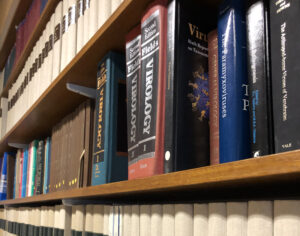Crystallography

Publications
3888256
CRISTA
chicago-author-date
50
date
desc
year
31985
https://www.i2bc.paris-saclay.fr/wp-content/plugins/zotpress/
%7B%22status%22%3A%22success%22%2C%22updateneeded%22%3Afalse%2C%22instance%22%3A%22zotpress-3a7d0c17f657ab49ad6c2ce32db37bdd%22%2C%22meta%22%3A%7B%22request_last%22%3A0%2C%22request_next%22%3A0%2C%22used_cache%22%3Atrue%7D%2C%22data%22%3A%5B%7B%22key%22%3A%22PSNPG2ZU%22%2C%22library%22%3A%7B%22id%22%3A3888256%7D%2C%22meta%22%3A%7B%22creatorSummary%22%3A%22Nisler%20et%20al.%22%2C%22parsedDate%22%3A%222024-05-22%22%2C%22numChildren%22%3A1%7D%2C%22bib%22%3A%22%3Cdiv%20class%3D%5C%22csl-bib-body%5C%22%20style%3D%5C%22line-height%3A%201.35%3B%20padding-left%3A%201em%3B%20text-indent%3A-1em%3B%5C%22%3E%5Cn%20%20%3Cdiv%20class%3D%5C%22csl-entry%5C%22%3ENisler%2C%20Jaroslav%2C%20Pavel%20Klime%26%23x161%3B%2C%20Radka%20Kon%26%23x10D%3Bit%26%23xED%3Bkov%26%23xE1%3B%2C%20Alena%20Kadlecov%26%23xE1%3B%2C%20Ji%26%23x159%3B%26%23xED%3B%20Voller%2C%20Mahfam%20Chalaki%2C%20Michael%20Karampelias%2C%20et%20al.%202024.%20%26%23x201C%3BCytokinin%20Oxidase%5C%2FDehydrogenase%20Inhibitors%3A%20Progress%20towards%20Agricultural%20Practice.%26%23x201D%3B%20%3Ci%3EJournal%20of%20Experimental%20Botany%3C%5C%2Fi%3E%2C%20May%2C%20erae239.%20%3Ca%20href%3D%27https%3A%5C%2F%5C%2Fdoi.org%5C%2F10.1093%5C%2Fjxb%5C%2Ferae239%27%3Ehttps%3A%5C%2F%5C%2Fdoi.org%5C%2F10.1093%5C%2Fjxb%5C%2Ferae239%3C%5C%2Fa%3E.%3C%5C%2Fdiv%3E%5Cn%3C%5C%2Fdiv%3E%22%2C%22data%22%3A%7B%22itemType%22%3A%22journalArticle%22%2C%22title%22%3A%22Cytokinin%20oxidase%5C%2Fdehydrogenase%20inhibitors%3A%20progress%20towards%20agricultural%20practice%22%2C%22creators%22%3A%5B%7B%22creatorType%22%3A%22author%22%2C%22firstName%22%3A%22Jaroslav%22%2C%22lastName%22%3A%22Nisler%22%7D%2C%7B%22creatorType%22%3A%22author%22%2C%22firstName%22%3A%22Pavel%22%2C%22lastName%22%3A%22Klime%5Cu0161%22%7D%2C%7B%22creatorType%22%3A%22author%22%2C%22firstName%22%3A%22Radka%22%2C%22lastName%22%3A%22Kon%5Cu010dit%5Cu00edkov%5Cu00e1%22%7D%2C%7B%22creatorType%22%3A%22author%22%2C%22firstName%22%3A%22Alena%22%2C%22lastName%22%3A%22Kadlecov%5Cu00e1%22%7D%2C%7B%22creatorType%22%3A%22author%22%2C%22firstName%22%3A%22Ji%5Cu0159%5Cu00ed%22%2C%22lastName%22%3A%22Voller%22%7D%2C%7B%22creatorType%22%3A%22author%22%2C%22firstName%22%3A%22Mahfam%22%2C%22lastName%22%3A%22Chalaki%22%7D%2C%7B%22creatorType%22%3A%22author%22%2C%22firstName%22%3A%22Michael%22%2C%22lastName%22%3A%22Karampelias%22%7D%2C%7B%22creatorType%22%3A%22author%22%2C%22firstName%22%3A%22Nino%22%2C%22lastName%22%3A%22Murvanidze%22%7D%2C%7B%22creatorType%22%3A%22author%22%2C%22firstName%22%3A%22Stefaan%20P.%20O.%22%2C%22lastName%22%3A%22Werbrouck%22%7D%2C%7B%22creatorType%22%3A%22author%22%2C%22firstName%22%3A%22David%22%2C%22lastName%22%3A%22Kope%5Cu010dn%5Cu00fd%22%7D%2C%7B%22creatorType%22%3A%22author%22%2C%22firstName%22%3A%22Libor%22%2C%22lastName%22%3A%22Havl%5Cu00ed%5Cu010dek%22%7D%2C%7B%22creatorType%22%3A%22author%22%2C%22firstName%22%3A%22Nuria%22%2C%22lastName%22%3A%22de%20Diego%22%7D%2C%7B%22creatorType%22%3A%22author%22%2C%22firstName%22%3A%22Pierre%22%2C%22lastName%22%3A%22Briozzo%22%7D%2C%7B%22creatorType%22%3A%22author%22%2C%22firstName%22%3A%22Solange%22%2C%22lastName%22%3A%22Mor%5Cu00e9ra%22%7D%2C%7B%22creatorType%22%3A%22author%22%2C%22firstName%22%3A%22David%22%2C%22lastName%22%3A%22Zalab%5Cu00e1k%22%7D%2C%7B%22creatorType%22%3A%22author%22%2C%22firstName%22%3A%22Luk%5Cu00e1%5Cu0161%22%2C%22lastName%22%3A%22Sp%5Cu00edchal%22%7D%5D%2C%22abstractNote%22%3A%22Cytokinin%20oxidase%5C%2Fdehydrogenase%20%28CKX%29%20inhibitors%20reduce%20the%20degradation%20of%20cytokinins%20in%20plants%20and%20thereby%20may%20improve%20the%20efficiency%20of%20agriculture%20and%20plant%20tissue%20culture-based%20practices.%20Here%2C%20we%20report%20a%20synthesis%20and%20structure-activity%20relationship%20study%20of%20novel%20urea%20derivatives%20concerning%20their%20CKX%20inhibitory%20activity.%20The%20best%20compounds%20showed%20sub-nanomolar%20IC50%20values%20with%20maize%20ZmCKX1%2C%20the%20lowest%20value%20yet%20documented.%20Other%20CKX%20isoforms%20of%20maize%20%28Zea%20mays%29%20and%20Arabidopsis%20were%20also%20inhibited%20very%20effectively.%20The%20binding%20mode%20of%20four%20compounds%20was%20characterized%20based%20on%20high-resolution%20crystal%20complex%20structures.%20Using%20the%20soil%20nematode%20Caenorhabditis%20elegans%2C%20and%20human%20skin%20fibroblasts%2C%20key%20CKX%20inhibitors%20with%20low%20toxicity%20were%20identified.%20These%20compounds%20enhanced%20the%20shoot%20regeneration%20of%20Lobelia%2C%20Drosera%2C%20and%20Plectranthus%2C%20as%20well%20as%20the%20growth%20of%20Arabidopsis%20and%20Brassica%20napus.%20At%20the%20same%20time%2C%20a%20key%20compound%20%28namely%2082%29%2C%20activated%20a%20cytokinin%20primary%20response%20gene%20ARR5%3AGUS%20and%20cytokinin%20sensor%20TCSv2%3AGUS%2C%20without%20activating%20the%20Arabidopsis%20cytokinin%20receptors%20AHK3%20and%20AHK4.%20This%20strongly%20implies%20that%20the%20effect%20of%20compound%2082%20is%20due%20to%20the%20upregulation%20of%20cytokinin%20signalling.%20Overall%2C%20this%20work%20presents%20highly%20effective%20and%20easily%20prepared%20CKX%20inhibitors%20with%20a%20low%20risk%20of%20environmental%20toxicity%20for%20further%20investigation%20of%20their%20potential%20in%20agriculture%20and%20biotechnology.%22%2C%22date%22%3A%222024-05-22%22%2C%22language%22%3A%22eng%22%2C%22DOI%22%3A%2210.1093%5C%2Fjxb%5C%2Ferae239%22%2C%22ISSN%22%3A%221460-2431%22%2C%22url%22%3A%22%22%2C%22collections%22%3A%5B%5D%2C%22dateModified%22%3A%222024-05-23T07%3A57%3A08Z%22%7D%7D%2C%7B%22key%22%3A%22IR6MQVYH%22%2C%22library%22%3A%7B%22id%22%3A3888256%7D%2C%22meta%22%3A%7B%22creatorSummary%22%3A%22Mor%5Cu00e9ra%20et%20al.%22%2C%22parsedDate%22%3A%222023-12-06%22%2C%22numChildren%22%3A1%7D%2C%22bib%22%3A%22%3Cdiv%20class%3D%5C%22csl-bib-body%5C%22%20style%3D%5C%22line-height%3A%201.35%3B%20padding-left%3A%201em%3B%20text-indent%3A-1em%3B%5C%22%3E%5Cn%20%20%3Cdiv%20class%3D%5C%22csl-entry%5C%22%3EMor%26%23xE9%3Bra%2C%20Solange%2C%20Armelle%20Vigouroux%2C%20Magali%20Aumont-Nicaise%2C%20Mohammed%20Ahmar%2C%20Thibault%20Meyer%2C%20Abbas%20El%20Sahili%2C%20Gr%26%23xE9%3Bgory%20Deicsics%2C%20et%20al.%202023.%20%26%23x201C%3BA%20Highly%20Conserved%20Ligand-Binding%20Site%20for%20AccA%20Transporters%20of%20Antibiotic%20and%20Quorum-Sensing%20Regulator%20in%20Agrobacterium%20Leads%20to%20a%20Different%20Specificity.%26%23x201D%3B%20%3Ci%3EThe%20Biochemical%20Journal%3C%5C%2Fi%3E%2C%20December%2C%20BCJ20230273.%20%3Ca%20href%3D%27https%3A%5C%2F%5C%2Fdoi.org%5C%2F10.1042%5C%2FBCJ20230273%27%3Ehttps%3A%5C%2F%5C%2Fdoi.org%5C%2F10.1042%5C%2FBCJ20230273%3C%5C%2Fa%3E.%3C%5C%2Fdiv%3E%5Cn%3C%5C%2Fdiv%3E%22%2C%22data%22%3A%7B%22itemType%22%3A%22journalArticle%22%2C%22title%22%3A%22A%20highly%20conserved%20ligand-binding%20site%20for%20AccA%20transporters%20of%20antibiotic%20and%20quorum-sensing%20regulator%20in%20Agrobacterium%20leads%20to%20a%20different%20specificity%22%2C%22creators%22%3A%5B%7B%22creatorType%22%3A%22author%22%2C%22firstName%22%3A%22Solange%22%2C%22lastName%22%3A%22Mor%5Cu00e9ra%22%7D%2C%7B%22creatorType%22%3A%22author%22%2C%22firstName%22%3A%22Armelle%22%2C%22lastName%22%3A%22Vigouroux%22%7D%2C%7B%22creatorType%22%3A%22author%22%2C%22firstName%22%3A%22Magali%22%2C%22lastName%22%3A%22Aumont-Nicaise%22%7D%2C%7B%22creatorType%22%3A%22author%22%2C%22firstName%22%3A%22Mohammed%22%2C%22lastName%22%3A%22Ahmar%22%7D%2C%7B%22creatorType%22%3A%22author%22%2C%22firstName%22%3A%22Thibault%22%2C%22lastName%22%3A%22Meyer%22%7D%2C%7B%22creatorType%22%3A%22author%22%2C%22firstName%22%3A%22Abbas%22%2C%22lastName%22%3A%22El%20Sahili%22%7D%2C%7B%22creatorType%22%3A%22author%22%2C%22firstName%22%3A%22Gr%5Cu00e9gory%22%2C%22lastName%22%3A%22Deicsics%22%7D%2C%7B%22creatorType%22%3A%22author%22%2C%22firstName%22%3A%22Almudena%22%2C%22lastName%22%3A%22Gonz%5Cu00e1lez-Mula%22%7D%2C%7B%22creatorType%22%3A%22author%22%2C%22firstName%22%3A%22Sizhe%22%2C%22lastName%22%3A%22Li%22%7D%2C%7B%22creatorType%22%3A%22author%22%2C%22firstName%22%3A%22Jeanne%22%2C%22lastName%22%3A%22Dor%5Cu00e9%22%7D%2C%7B%22creatorType%22%3A%22author%22%2C%22firstName%22%3A%22Serena%22%2C%22lastName%22%3A%22Siragu%22%7D%2C%7B%22creatorType%22%3A%22author%22%2C%22firstName%22%3A%22Pierre%22%2C%22lastName%22%3A%22Legrand%22%7D%2C%7B%22creatorType%22%3A%22author%22%2C%22firstName%22%3A%22Camille%22%2C%22lastName%22%3A%22Penot%22%7D%2C%7B%22creatorType%22%3A%22author%22%2C%22firstName%22%3A%22Fran%5Cu00e7ois%22%2C%22lastName%22%3A%22Andr%5Cu00e8%22%7D%2C%7B%22creatorType%22%3A%22author%22%2C%22firstName%22%3A%22Denis%22%2C%22lastName%22%3A%22Faure%22%7D%2C%7B%22creatorType%22%3A%22author%22%2C%22firstName%22%3A%22Laurent%22%2C%22lastName%22%3A%22Soul%5Cu00e8re%22%7D%2C%7B%22creatorType%22%3A%22author%22%2C%22firstName%22%3A%22Yves%22%2C%22lastName%22%3A%22Queneau%22%7D%2C%7B%22creatorType%22%3A%22author%22%2C%22firstName%22%3A%22Ludovic%22%2C%22lastName%22%3A%22Vial%22%7D%5D%2C%22abstractNote%22%3A%22Plants%20genetically%20modified%20by%20the%20pathogenic%20Agrobacterium%20strain%20C58%20synthesize%20agrocinopines%20A%20and%20B%2C%20whereas%20those%20modified%20by%20the%20pathogenic%20strain%20Bo542%20produce%20agrocinopines%20C%20and%20D.%20The%20four%20agrocinopines%20%28A%2C%20B%2C%20C%20and%20D%29%20serve%20as%20nutrients%20by%20agrobacteria%20and%20signaling%20molecule%20for%20the%20dissemination%20of%20virulence%20genes.%20They%20share%20the%20uncommon%20pyranose-2-phosphate%20motif%2C%20represented%20by%20the%20L-arabinopyranose%20moiety%20in%20agrocinopines%20A%5C%2FB%20and%20the%20D-glucopyranose%20moiety%20in%20agrocinopines%20C%5C%2FD%2C%20also%20found%20in%20the%20antibiotic%20agrocin%2084.%20They%20are%20imported%20into%20agrobacterial%20cytoplasm%20via%20the%20Acc%20transport%20system%2C%20including%20the%20solute-binding%20protein%20AccA%20coupled%20to%20an%20ABC%20transporter.%20We%20have%20previously%20shown%20that%20unexpectedly%2C%20AccA%20from%20strain%20C58%20%28AccAC58%29%20recognizes%20the%20pyranose-2-phosphate%20motif%20present%20in%20all%20four%20agrocinopines%20and%20agrocin%2084%2C%20meaning%20that%20strain%20C58%20is%20able%20to%20import%20agrocinopines%20C%5C%2FD%2C%20originating%20from%20the%20competitor%20strain%20Bo542.%20Here%2C%20using%20agrocinopine%20derivatives%20and%20combining%20crystallography%2C%20affinity%20and%20stability%20measurements%2C%20modeling%2C%20molecular%20dynamics%2C%20in%20vitro%20and%20vivo%20assays%2C%20we%20show%20that%20AccABo542%20and%20AccAC58%20behave%20differently%20despite%2075%25%20sequence%20identity%20and%20a%20nearly%20identical%20ligand%20binding%20site.%20Indeed%2C%20strain%20Bo542%20imports%20only%20compounds%20containing%20the%20D-glucopyranose-2-phosphate%20moiety%2C%20and%20with%20a%20lower%20affinity%20compared%20to%20strain%20C58.%20This%20difference%20in%20import%20efficiency%20makes%20C58%20more%20competitive%20than%20Bo542%20in%20culture%20media.%20We%20can%20now%20explain%20why%20Agrobacterium%5C%2FAllorhizobium%20vitis%20strain%20S4%20is%20insensitive%20to%20agrocin%2084%2C%20although%20its%20genome%20contains%20a%20conserved%20Acc%20transport%20system.%20Overall%2C%20our%20work%20highlights%20AccA%20proteins%20as%20a%20case%20study%2C%20for%20which%20stability%20and%20dynamics%20drive%20specificity.%22%2C%22date%22%3A%222023-12-06%22%2C%22language%22%3A%22eng%22%2C%22DOI%22%3A%2210.1042%5C%2FBCJ20230273%22%2C%22ISSN%22%3A%221470-8728%22%2C%22url%22%3A%22%22%2C%22collections%22%3A%5B%5D%2C%22dateModified%22%3A%222024-04-23T09%3A06%3A32Z%22%7D%7D%2C%7B%22key%22%3A%22VKFNCH3W%22%2C%22library%22%3A%7B%22id%22%3A3888256%7D%2C%22meta%22%3A%7B%22creatorSummary%22%3A%22E%20et%20al.%22%2C%22parsedDate%22%3A%222023-12-04%22%2C%22numChildren%22%3A2%7D%2C%22bib%22%3A%22%3Cdiv%20class%3D%5C%22csl-bib-body%5C%22%20style%3D%5C%22line-height%3A%201.35%3B%20padding-left%3A%201em%3B%20text-indent%3A-1em%3B%5C%22%3E%5Cn%20%20%3Cdiv%20class%3D%5C%22csl-entry%5C%22%3EE%2C%20%26%23x13D%3Bupt%26%23xE1%3Bkov%26%23xE1%3B%2C%20Vigouroux%20A%2C%20Kon%26%23x10D%3Bit%26%23xED%3Bkov%26%23xE1%3B%20R%2C%20Kope%26%23x10D%3Bn%26%23xE1%3B%20M%2C%20Zalab%26%23xE1%3Bk%20D%2C%20Nov%26%23xE1%3Bk%20O%2C%20Salcedo%20Sarmiento%20S%2C%20et%20al.%202023.%20%26%23x201C%3BPlant%20Nucleoside%20N-Ribohydrolases%3A%20Riboside%20Binding%20and%20Role%20in%20Nitrogen%20Storage%20Mobilization.%26%23x201D%3B%20%3Ci%3EThe%20Plant%20Journal%26%23x202F%3B%3A%20For%20Cell%20and%20Molecular%20Biology%3C%5C%2Fi%3E%2C%20December.%20%3Ca%20href%3D%27https%3A%5C%2F%5C%2Fdoi.org%5C%2F10.1111%5C%2Ftpj.16572%27%3Ehttps%3A%5C%2F%5C%2Fdoi.org%5C%2F10.1111%5C%2Ftpj.16572%3C%5C%2Fa%3E.%3C%5C%2Fdiv%3E%5Cn%3C%5C%2Fdiv%3E%22%2C%22data%22%3A%7B%22itemType%22%3A%22journalArticle%22%2C%22title%22%3A%22Plant%20nucleoside%20N-ribohydrolases%3A%20riboside%20binding%20and%20role%20in%20nitrogen%20storage%20mobilization%22%2C%22creators%22%3A%5B%7B%22creatorType%22%3A%22author%22%2C%22firstName%22%3A%22%5Cu013dupt%5Cu00e1kov%5Cu00e1%22%2C%22lastName%22%3A%22E%22%7D%2C%7B%22creatorType%22%3A%22author%22%2C%22firstName%22%3A%22Vigouroux%22%2C%22lastName%22%3A%22A%22%7D%2C%7B%22creatorType%22%3A%22author%22%2C%22firstName%22%3A%22Kon%5Cu010dit%5Cu00edkov%5Cu00e1%22%2C%22lastName%22%3A%22R%22%7D%2C%7B%22creatorType%22%3A%22author%22%2C%22firstName%22%3A%22Kope%5Cu010dn%5Cu00e1%22%2C%22lastName%22%3A%22M%22%7D%2C%7B%22creatorType%22%3A%22author%22%2C%22firstName%22%3A%22Zalab%5Cu00e1k%22%2C%22lastName%22%3A%22D%22%7D%2C%7B%22creatorType%22%3A%22author%22%2C%22firstName%22%3A%22Nov%5Cu00e1k%22%2C%22lastName%22%3A%22O%22%7D%2C%7B%22creatorType%22%3A%22author%22%2C%22firstName%22%3A%22Salcedo%20Sarmiento%22%2C%22lastName%22%3A%22S%22%7D%2C%7B%22creatorType%22%3A%22author%22%2C%22firstName%22%3A%22%5Cu0106avar%20Zeljkovi%5Cu0107%22%2C%22lastName%22%3A%22S%22%7D%2C%7B%22creatorType%22%3A%22author%22%2C%22firstName%22%3A%22Kope%5Cu010dn%5Cu00fd%22%2C%22lastName%22%3A%22Dj%22%7D%2C%7B%22creatorType%22%3A%22author%22%2C%22firstName%22%3A%22von%20Schwartzenberg%22%2C%22lastName%22%3A%22K%22%7D%2C%7B%22creatorType%22%3A%22author%22%2C%22firstName%22%3A%22Strnad%22%2C%22lastName%22%3A%22M%22%7D%2C%7B%22creatorType%22%3A%22author%22%2C%22firstName%22%3A%22Sp%5Cu00edchal%22%2C%22lastName%22%3A%22L%22%7D%2C%7B%22creatorType%22%3A%22author%22%2C%22firstName%22%3A%22De%20Diego%22%2C%22lastName%22%3A%22N%22%7D%2C%7B%22creatorType%22%3A%22author%22%2C%22firstName%22%3A%22Kope%5Cu010dn%5Cu00fd%22%2C%22lastName%22%3A%22D%22%7D%2C%7B%22creatorType%22%3A%22author%22%2C%22firstName%22%3A%22Mor%5Cu00e9ra%22%2C%22lastName%22%3A%22S%22%7D%5D%2C%22abstractNote%22%3A%22Cells%20save%20their%20energy%20during%20nitrogen%20starvation%20by%20selective%20autophagy%20of%20ribosomes%20and%20degradation%20of%20RNA%20to%20ribonucleotides%20and%20nucleosides.%20Nucleosides%20are%20hydrolyzed%20by%20nucleoside%20N-ribohydrolases%20%28nucleosidases%2C%20NRHs%29.%20Subclass%20I%20of%20NRHs%20preferentially%20hydrolyzes%20the%20purine%20ribosides%20while%20s%20%5Cu2026%22%2C%22date%22%3A%2212%5C%2F04%5C%2F2023%22%2C%22language%22%3A%22en%22%2C%22DOI%22%3A%2210.1111%5C%2Ftpj.16572%22%2C%22ISSN%22%3A%221365-313X%22%2C%22url%22%3A%22https%3A%5C%2F%5C%2Fpubmed.ncbi.nlm.nih.gov%5C%2F38044809%5C%2F%3Fdopt%3DAbstract%22%2C%22collections%22%3A%5B%5D%2C%22dateModified%22%3A%222024-04-23T09%3A06%3A38Z%22%7D%7D%2C%7B%22key%22%3A%225N3GEZ6P%22%2C%22library%22%3A%7B%22id%22%3A3888256%7D%2C%22meta%22%3A%7B%22creatorSummary%22%3A%22Mao%20et%20al.%22%2C%22parsedDate%22%3A%222023-10-11%22%2C%22numChildren%22%3A1%7D%2C%22bib%22%3A%22%3Cdiv%20class%3D%5C%22csl-bib-body%5C%22%20style%3D%5C%22line-height%3A%201.35%3B%20padding-left%3A%201em%3B%20text-indent%3A-1em%3B%5C%22%3E%5Cn%20%20%3Cdiv%20class%3D%5C%22csl-entry%5C%22%3EMao%2C%20Wei%2C%20Lars%20D.%20Renner%2C%20Charl%26%23xE8%3Bne%20Cornilleau%2C%20Ines%20Li%20de%20la%20Sierra-Gallay%2C%20Sana%20Afensiss%2C%20Sarah%20Benlamara%2C%20Yoan%20Ah-Seng%2C%20et%20al.%202023.%20%26%23x201C%3BOn%20the%20Role%20of%20Nucleotides%20and%20Lipids%20in%20the%20Polymerization%20of%20the%20Actin%20Homolog%20MreB%20from%20a%20Gram-Positive%20Bacterium.%26%23x201D%3B%20%3Ci%3EELife%3C%5C%2Fi%3E%2012%20%28October%29%3A%20e84505.%20%3Ca%20href%3D%27https%3A%5C%2F%5C%2Fdoi.org%5C%2F10.7554%5C%2FeLife.84505%27%3Ehttps%3A%5C%2F%5C%2Fdoi.org%5C%2F10.7554%5C%2FeLife.84505%3C%5C%2Fa%3E.%3C%5C%2Fdiv%3E%5Cn%3C%5C%2Fdiv%3E%22%2C%22data%22%3A%7B%22itemType%22%3A%22journalArticle%22%2C%22title%22%3A%22On%20the%20role%20of%20nucleotides%20and%20lipids%20in%20the%20polymerization%20of%20the%20actin%20homolog%20MreB%20from%20a%20Gram-positive%20bacterium%22%2C%22creators%22%3A%5B%7B%22creatorType%22%3A%22author%22%2C%22firstName%22%3A%22Wei%22%2C%22lastName%22%3A%22Mao%22%7D%2C%7B%22creatorType%22%3A%22author%22%2C%22firstName%22%3A%22Lars%20D.%22%2C%22lastName%22%3A%22Renner%22%7D%2C%7B%22creatorType%22%3A%22author%22%2C%22firstName%22%3A%22Charl%5Cu00e8ne%22%2C%22lastName%22%3A%22Cornilleau%22%7D%2C%7B%22creatorType%22%3A%22author%22%2C%22firstName%22%3A%22Ines%22%2C%22lastName%22%3A%22Li%20de%20la%20Sierra-Gallay%22%7D%2C%7B%22creatorType%22%3A%22author%22%2C%22firstName%22%3A%22Sana%22%2C%22lastName%22%3A%22Afensiss%22%7D%2C%7B%22creatorType%22%3A%22author%22%2C%22firstName%22%3A%22Sarah%22%2C%22lastName%22%3A%22Benlamara%22%7D%2C%7B%22creatorType%22%3A%22author%22%2C%22firstName%22%3A%22Yoan%22%2C%22lastName%22%3A%22Ah-Seng%22%7D%2C%7B%22creatorType%22%3A%22author%22%2C%22firstName%22%3A%22Herman%22%2C%22lastName%22%3A%22Van%20Tilbeurgh%22%7D%2C%7B%22creatorType%22%3A%22author%22%2C%22firstName%22%3A%22Sylvie%22%2C%22lastName%22%3A%22Nessler%22%7D%2C%7B%22creatorType%22%3A%22author%22%2C%22firstName%22%3A%22Aur%5Cu00e9lie%22%2C%22lastName%22%3A%22Bertin%22%7D%2C%7B%22creatorType%22%3A%22author%22%2C%22firstName%22%3A%22Arnaud%22%2C%22lastName%22%3A%22Chastanet%22%7D%2C%7B%22creatorType%22%3A%22author%22%2C%22firstName%22%3A%22Rut%22%2C%22lastName%22%3A%22Carballido-Lopez%22%7D%5D%2C%22abstractNote%22%3A%22In%20vivo%2C%20bacterial%20actin%20MreB%20assembles%20into%20dynamic%20membrane-associated%20filamentous%20structures%20that%20exhibit%20circumferential%20motion%20around%20the%20cell.%20Current%20knowledge%20of%20MreB%20biochemical%20and%20polymerization%20properties%20in%20vitro%20remains%20limited%20and%20is%20mostly%20based%20on%20MreB%20proteins%20from%20Gram-negative%20species.%20In%20this%20study%2C%20we%20report%20the%20first%20observation%20of%20organized%20protofilaments%20by%20electron%20microscopy%20and%20the%20first%203D-structure%20of%20MreB%20from%20a%20Gram-positive%20bacterium.%20We%20show%20that%20Geobacillus%20stearothermophilus%20MreB%20forms%20straight%20pairs%20of%20protofilaments%20on%20lipid%20surfaces%20in%20the%20presence%20of%20ATP%20or%20GTP%2C%20but%20not%20in%20the%20presence%20of%20ADP%2C%20GDP%20or%20non-hydrolysable%20ATP%20analogs.%20We%20demonstrate%20that%20membrane%20anchoring%20is%20mediated%20by%20two%20spatially%20close%20short%20hydrophobic%20sequences%20while%20electrostatic%20interactions%20also%20contribute%20to%20lipid%20binding%2C%20and%20show%20that%20the%20population%20of%20membrane-bound%20protofilament%20doublets%20is%20in%20steady-state.%20In%20solution%2C%20protofilament%20doublets%20were%20not%20detected%20in%20any%20condition%20tested.%20Instead%2C%20MreB%20formed%20large%20sheets%20regardless%20of%20the%20bound%20nucleotide%2C%20albeit%20at%20a%20higher%20critical%20concentration.%20Altogether%2C%20our%20results%20indicate%20that%20both%20lipids%20and%20ATP%20are%20facilitators%20of%20MreB%20polymerization%2C%20and%20are%20consistent%20with%20a%20dual%20effect%20of%20ATP%20hydrolysis%2C%20in%20promoting%20both%20membrane%20binding%20and%20filaments%20assembly%5C%2Fdisassembly.%22%2C%22date%22%3A%222023-10-11%22%2C%22language%22%3A%22eng%22%2C%22DOI%22%3A%2210.7554%5C%2FeLife.84505%22%2C%22ISSN%22%3A%222050-084X%22%2C%22url%22%3A%22%22%2C%22collections%22%3A%5B%5D%2C%22dateModified%22%3A%222024-04-23T06%3A43%3A45Z%22%7D%7D%2C%7B%22key%22%3A%22HLLYRKDI%22%2C%22library%22%3A%7B%22id%22%3A3888256%7D%2C%22meta%22%3A%7B%22creatorSummary%22%3A%22Moreaud%20et%20al.%22%2C%22parsedDate%22%3A%222023-03-14%22%2C%22numChildren%22%3A1%7D%2C%22bib%22%3A%22%3Cdiv%20class%3D%5C%22csl-bib-body%5C%22%20style%3D%5C%22line-height%3A%201.35%3B%20padding-left%3A%201em%3B%20text-indent%3A-1em%3B%5C%22%3E%5Cn%20%20%3Cdiv%20class%3D%5C%22csl-entry%5C%22%3EMoreaud%2C%20Laureen%2C%20S%26%23xE9%3Bbastien%20Viollet%2C%20Agathe%20Urvoas%2C%20Marie%20Valerio-Lepiniec%2C%20Agn%26%23xE8%3Bs%20Mesneau%2C%20In%26%23xE8%3Bs%20Li%20de%20la%20Sierra-Gallay%2C%20Jessalyn%20Miller%2C%20et%20al.%202023.%20%26%23x201C%3BDesign%2C%20Synthesis%2C%20and%20Characterization%20of%20Protein%20Origami%20Based%20on%20Self-Assembly%20of%20a%20Brick%20and%20Staple%20Artificial%20Protein%20Pair.%26%23x201D%3B%20%3Ci%3EProceedings%20of%20the%20National%20Academy%20of%20Sciences%20of%20the%20United%20States%20of%20America%3C%5C%2Fi%3E%20120%20%2811%29%3A%20e2218428120.%20%3Ca%20href%3D%27https%3A%5C%2F%5C%2Fdoi.org%5C%2F10.1073%5C%2Fpnas.2218428120%27%3Ehttps%3A%5C%2F%5C%2Fdoi.org%5C%2F10.1073%5C%2Fpnas.2218428120%3C%5C%2Fa%3E.%3C%5C%2Fdiv%3E%5Cn%3C%5C%2Fdiv%3E%22%2C%22data%22%3A%7B%22itemType%22%3A%22journalArticle%22%2C%22title%22%3A%22Design%2C%20synthesis%2C%20and%20characterization%20of%20protein%20origami%20based%20on%20self-assembly%20of%20a%20brick%20and%20staple%20artificial%20protein%20pair%22%2C%22creators%22%3A%5B%7B%22creatorType%22%3A%22author%22%2C%22firstName%22%3A%22Laureen%22%2C%22lastName%22%3A%22Moreaud%22%7D%2C%7B%22creatorType%22%3A%22author%22%2C%22firstName%22%3A%22S%5Cu00e9bastien%22%2C%22lastName%22%3A%22Viollet%22%7D%2C%7B%22creatorType%22%3A%22author%22%2C%22firstName%22%3A%22Agathe%22%2C%22lastName%22%3A%22Urvoas%22%7D%2C%7B%22creatorType%22%3A%22author%22%2C%22firstName%22%3A%22Marie%22%2C%22lastName%22%3A%22Valerio-Lepiniec%22%7D%2C%7B%22creatorType%22%3A%22author%22%2C%22firstName%22%3A%22Agn%5Cu00e8s%22%2C%22lastName%22%3A%22Mesneau%22%7D%2C%7B%22creatorType%22%3A%22author%22%2C%22firstName%22%3A%22In%5Cu00e8s%22%2C%22lastName%22%3A%22Li%20de%20la%20Sierra-Gallay%22%7D%2C%7B%22creatorType%22%3A%22author%22%2C%22firstName%22%3A%22Jessalyn%22%2C%22lastName%22%3A%22Miller%22%7D%2C%7B%22creatorType%22%3A%22author%22%2C%22firstName%22%3A%22Malika%22%2C%22lastName%22%3A%22Ouldali%22%7D%2C%7B%22creatorType%22%3A%22author%22%2C%22firstName%22%3A%22C%5Cu00e9cile%22%2C%22lastName%22%3A%22Marcelot%22%7D%2C%7B%22creatorType%22%3A%22author%22%2C%22firstName%22%3A%22St%5Cu00e9phanie%22%2C%22lastName%22%3A%22Balor%22%7D%2C%7B%22creatorType%22%3A%22author%22%2C%22firstName%22%3A%22Vanessa%22%2C%22lastName%22%3A%22Soldan%22%7D%2C%7B%22creatorType%22%3A%22author%22%2C%22firstName%22%3A%22Cristelle%22%2C%22lastName%22%3A%22Meriadec%22%7D%2C%7B%22creatorType%22%3A%22author%22%2C%22firstName%22%3A%22Franck%22%2C%22lastName%22%3A%22Artzner%22%7D%2C%7B%22creatorType%22%3A%22author%22%2C%22firstName%22%3A%22Erik%22%2C%22lastName%22%3A%22Dujardin%22%7D%2C%7B%22creatorType%22%3A%22author%22%2C%22firstName%22%3A%22Philippe%22%2C%22lastName%22%3A%22Minard%22%7D%5D%2C%22abstractNote%22%3A%22A%20versatile%20strategy%20to%20create%20an%20inducible%20protein%20assembly%20with%20predefined%20geometry%20is%20demonstrated.%20The%20assembly%20is%20triggered%20by%20a%20binding%20protein%20that%20staples%20two%20identical%20protein%20bricks%20together%20in%20a%20predictable%20spatial%20conformation.%20The%20brick%20and%20staple%20proteins%20are%20designed%20for%20mutual%20directional%20affinity%20and%20engineered%20by%20directed%20evolution%20from%20a%20synthetic%20modular%20repeat%20protein%20library.%20As%20a%20proof%20of%20concept%2C%20this%20article%20reports%20on%20the%20spontaneous%2C%20extremely%20fast%20and%20quantitative%20self-assembly%20of%20two%20designed%20alpha-repeat%20%28%5Cu03b1Rep%29%20brick%20and%20staple%20proteins%20into%20macroscopic%20tubular%20superhelices%20at%20room%20temperature.%20Small-angle%20X-ray%20scattering%20%28SAXS%29%20and%20transmission%20electron%20microscopy%20%28TEM%20with%20staining%20agent%20and%20cryoTEM%29%20elucidate%20the%20resulting%20superhelical%20arrangement%20that%20precisely%20matches%20the%20a%20priori%20intended%203D%20assembly.%20The%20highly%20ordered%2C%20macroscopic%20biomolecular%20construction%20sustains%20temperatures%20as%20high%20as%2075%20%5Cu00b0C%20thanks%20to%20the%20robust%20%5Cu03b1Rep%20building%20blocks.%20Since%20the%20%5Cu03b1-helices%20of%20the%20brick%20and%20staple%20proteins%20are%20highly%20programmable%2C%20their%20design%20allows%20encoding%20the%20geometry%20and%20chemical%20surfaces%20of%20the%20final%20supramolecular%20protein%20architecture.%20This%20work%20opens%20routes%20toward%20the%20design%20and%20fabrication%20of%20multiscale%20protein%20origami%20with%20arbitrarily%20programmed%20shapes%20and%20chemical%20functions.%22%2C%22date%22%3A%222023-03-14%22%2C%22language%22%3A%22eng%22%2C%22DOI%22%3A%2210.1073%5C%2Fpnas.2218428120%22%2C%22ISSN%22%3A%221091-6490%22%2C%22url%22%3A%22%22%2C%22collections%22%3A%5B%5D%2C%22dateModified%22%3A%222024-04-23T06%3A43%3A12Z%22%7D%7D%2C%7B%22key%22%3A%22KHYGIHUK%22%2C%22library%22%3A%7B%22id%22%3A3888256%7D%2C%22meta%22%3A%7B%22creatorSummary%22%3A%22Travin%20et%20al.%22%2C%22parsedDate%22%3A%222023-02-21%22%2C%22numChildren%22%3A1%7D%2C%22bib%22%3A%22%3Cdiv%20class%3D%5C%22csl-bib-body%5C%22%20style%3D%5C%22line-height%3A%201.35%3B%20padding-left%3A%201em%3B%20text-indent%3A-1em%3B%5C%22%3E%5Cn%20%20%3Cdiv%20class%3D%5C%22csl-entry%5C%22%3ETravin%2C%20Dmitrii%20Y.%2C%20Romain%20Jouan%2C%20Armelle%20Vigouroux%2C%20Satomi%20Inaba-Inoue%2C%20Joy%20Lachat%2C%20Fazal%20Haq%2C%20Tatiana%20Timchenko%2C%20et%20al.%202023.%20%26%23x201C%3BDual-Uptake%20Mode%20of%20the%20Antibiotic%20Phazolicin%20Prevents%20Resistance%20Acquisition%20by%20Gram-Negative%20Bacteria.%26%23x201D%3B%20%3Ci%3EMBio%3C%5C%2Fi%3E%2C%20February%2C%20e0021723.%20%3Ca%20href%3D%27https%3A%5C%2F%5C%2Fdoi.org%5C%2F10.1128%5C%2Fmbio.00217-23%27%3Ehttps%3A%5C%2F%5C%2Fdoi.org%5C%2F10.1128%5C%2Fmbio.00217-23%3C%5C%2Fa%3E.%3C%5C%2Fdiv%3E%5Cn%3C%5C%2Fdiv%3E%22%2C%22data%22%3A%7B%22itemType%22%3A%22journalArticle%22%2C%22title%22%3A%22Dual-Uptake%20Mode%20of%20the%20Antibiotic%20Phazolicin%20Prevents%20Resistance%20Acquisition%20by%20Gram-Negative%20Bacteria%22%2C%22creators%22%3A%5B%7B%22creatorType%22%3A%22author%22%2C%22firstName%22%3A%22Dmitrii%20Y.%22%2C%22lastName%22%3A%22Travin%22%7D%2C%7B%22creatorType%22%3A%22author%22%2C%22firstName%22%3A%22Romain%22%2C%22lastName%22%3A%22Jouan%22%7D%2C%7B%22creatorType%22%3A%22author%22%2C%22firstName%22%3A%22Armelle%22%2C%22lastName%22%3A%22Vigouroux%22%7D%2C%7B%22creatorType%22%3A%22author%22%2C%22firstName%22%3A%22Satomi%22%2C%22lastName%22%3A%22Inaba-Inoue%22%7D%2C%7B%22creatorType%22%3A%22author%22%2C%22firstName%22%3A%22Joy%22%2C%22lastName%22%3A%22Lachat%22%7D%2C%7B%22creatorType%22%3A%22author%22%2C%22firstName%22%3A%22Fazal%22%2C%22lastName%22%3A%22Haq%22%7D%2C%7B%22creatorType%22%3A%22author%22%2C%22firstName%22%3A%22Tatiana%22%2C%22lastName%22%3A%22Timchenko%22%7D%2C%7B%22creatorType%22%3A%22author%22%2C%22firstName%22%3A%22Dmitry%22%2C%22lastName%22%3A%22Sutormin%22%7D%2C%7B%22creatorType%22%3A%22author%22%2C%22firstName%22%3A%22Svetlana%22%2C%22lastName%22%3A%22Dubiley%22%7D%2C%7B%22creatorType%22%3A%22author%22%2C%22firstName%22%3A%22Konstantinos%22%2C%22lastName%22%3A%22Beis%22%7D%2C%7B%22creatorType%22%3A%22author%22%2C%22firstName%22%3A%22Solange%22%2C%22lastName%22%3A%22Mor%5Cu00e9ra%22%7D%2C%7B%22creatorType%22%3A%22author%22%2C%22firstName%22%3A%22Konstantin%22%2C%22lastName%22%3A%22Severinov%22%7D%2C%7B%22creatorType%22%3A%22author%22%2C%22firstName%22%3A%22Peter%22%2C%22lastName%22%3A%22Mergaert%22%7D%5D%2C%22abstractNote%22%3A%22Phazolicin%20%28PHZ%29%20is%20a%20peptide%20antibiotic%20exhibiting%20narrow-spectrum%20activity%20against%20rhizobia%20closely%20related%20to%20its%20producer%2C%20Rhizobium%20sp.%20strain%20Pop5.%20Here%2C%20we%20show%20that%20the%20frequency%20of%20spontaneous%20PHZ-resistant%20mutants%20in%20Sinorhizobium%20meliloti%20is%20below%20the%20detection%20limit.%20We%20find%20that%20PHZ%20can%20enter%20S.%20meliloti%20cells%20through%20two%20distinct%20promiscuous%20peptide%20transporters%2C%20BacA%20and%20YejABEF%2C%20which%20belong%20to%20the%20SLiPT%20%28SbmA-like%20peptide%20transporter%29%20and%20ABC%20%28ATP-binding%20cassette%29%20transporter%20families%2C%20respectively.%20The%20dual-uptake%20mode%20explains%20the%20lack%20of%20observed%20resistance%20acquisition%20because%20the%20simultaneous%20inactivation%20of%20both%20transporters%20is%20necessary%20for%20resistance%20to%20PHZ.%20Since%20both%20BacA%20and%20YejABEF%20are%20essential%20for%20the%20development%20of%20functional%20symbiosis%20of%20S.%20meliloti%20with%20leguminous%20plants%2C%20the%20unlikely%20acquisition%20of%20PHZ%20resistance%20via%20the%20inactivation%20of%20these%20transporters%20is%20further%20disfavored.%20A%20whole-genome%20transposon%20sequencing%20screen%20did%20not%20reveal%20additional%20genes%20that%20can%20provide%20strong%20PHZ%20resistance%20when%20inactivated.%20However%2C%20it%20was%20found%20that%20the%20capsular%20polysaccharide%20KPS%2C%20the%20novel%20putative%20envelope%20polysaccharide%20PPP%20%28PHZ-protecting%20polysaccharide%29%2C%20as%20well%20as%20the%20peptidoglycan%20layer%20jointly%20contribute%20to%20the%20sensitivity%20of%20S.%20meliloti%20to%20PHZ%2C%20most%20likely%20serving%20as%20barriers%20that%20reduce%20the%20amount%20of%20PHZ%20transported%20inside%20the%20cell.%20IMPORTANCE%20Many%20bacteria%20produce%20antimicrobial%20peptides%20to%20eliminate%20competitors%20and%20create%20an%20exclusive%20niche.%20These%20peptides%20act%20either%20by%20membrane%20disruption%20or%20by%20inhibiting%20essential%20intracellular%20processes.%20The%20Achilles%27%20heel%20of%20the%20latter%20type%20of%20antimicrobials%20is%20their%20dependence%20on%20transporters%20to%20enter%20susceptible%20cells.%20Transporter%20inactivation%20results%20in%20resistance.%20Here%2C%20we%20show%20that%20a%20rhizobial%20ribosome-targeting%20peptide%2C%20phazolicin%20%28PHZ%29%2C%20uses%20two%20different%20transporters%2C%20BacA%20and%20YejABEF%2C%20to%20enter%20the%20cells%20of%20a%20symbiotic%20bacterium%2C%20Sinorhizobium%20meliloti.%20This%20dual-entry%20mode%20dramatically%20reduces%20the%20probability%20of%20the%20appearance%20of%20PHZ-resistant%20mutants.%20Since%20these%20transporters%20are%20also%20crucial%20for%20S.%20meliloti%20symbiotic%20associations%20with%20host%20plants%2C%20their%20inactivation%20in%20natural%20settings%20is%20strongly%20disfavored%2C%20making%20PHZ%20an%20attractive%20lead%20for%20the%20development%20of%20biocontrol%20agents%20for%20agriculture.%22%2C%22date%22%3A%222023-02-21%22%2C%22language%22%3A%22eng%22%2C%22DOI%22%3A%2210.1128%5C%2Fmbio.00217-23%22%2C%22ISSN%22%3A%222150-7511%22%2C%22url%22%3A%22%22%2C%22collections%22%3A%5B%5D%2C%22dateModified%22%3A%222024-04-23T06%3A58%3A33Z%22%7D%7D%2C%7B%22key%22%3A%226UBJKWCI%22%2C%22library%22%3A%7B%22id%22%3A3888256%7D%2C%22meta%22%3A%7B%22creatorSummary%22%3A%22B%5Cu011bl%5Cu00ed%5Cu010dek%20et%20al.%22%2C%22parsedDate%22%3A%222023-02-14%22%2C%22numChildren%22%3A1%7D%2C%22bib%22%3A%22%3Cdiv%20class%3D%5C%22csl-bib-body%5C%22%20style%3D%5C%22line-height%3A%201.35%3B%20padding-left%3A%201em%3B%20text-indent%3A-1em%3B%5C%22%3E%5Cn%20%20%3Cdiv%20class%3D%5C%22csl-entry%5C%22%3EB%26%23x11B%3Bl%26%23xED%3B%26%23x10D%3Bek%2C%20Jakub%2C%20Eva%20%26%23x13D%3Bupt%26%23xE1%3Bkov%26%23xE1%3B%2C%20David%20Kope%26%23x10D%3Bn%26%23xFD%3B%2C%20Jan%20Fr%26%23xF6%3Bmmel%2C%20Armelle%20Vigouroux%2C%20Sanja%20%26%23x106%3Bavar%20Zeljkovi%26%23x107%3B%2C%20Franjo%20Jagic%2C%20et%20al.%202023.%20%26%23x201C%3BBiochemical%20Ans%20Structural%20Basis%20of%20Polyamine%2C%20Lysine%20and%20Ornithine%20Acetylation%20Catalyzed%20by%20Spermine%5C%2FSpermidine%20N-Acetyl%20Transferase%20in%20Moss%20and%20Maize.%26%23x201D%3B%20%3Ci%3EThe%20Plant%20Journal%3A%20For%20Cell%20and%20Molecular%20Biology%3C%5C%2Fi%3E%2C%20February.%20%3Ca%20href%3D%27https%3A%5C%2F%5C%2Fdoi.org%5C%2F10.1111%5C%2Ftpj.16148%27%3Ehttps%3A%5C%2F%5C%2Fdoi.org%5C%2F10.1111%5C%2Ftpj.16148%3C%5C%2Fa%3E.%3C%5C%2Fdiv%3E%5Cn%3C%5C%2Fdiv%3E%22%2C%22data%22%3A%7B%22itemType%22%3A%22journalArticle%22%2C%22title%22%3A%22Biochemical%20ans%20structural%20basis%20of%20polyamine%2C%20lysine%20and%20ornithine%20acetylation%20catalyzed%20by%20spermine%5C%2Fspermidine%20N-acetyl%20transferase%20in%20moss%20and%20maize%22%2C%22creators%22%3A%5B%7B%22creatorType%22%3A%22author%22%2C%22firstName%22%3A%22Jakub%22%2C%22lastName%22%3A%22B%5Cu011bl%5Cu00ed%5Cu010dek%22%7D%2C%7B%22creatorType%22%3A%22author%22%2C%22firstName%22%3A%22Eva%22%2C%22lastName%22%3A%22%5Cu013dupt%5Cu00e1kov%5Cu00e1%22%7D%2C%7B%22creatorType%22%3A%22author%22%2C%22firstName%22%3A%22David%22%2C%22lastName%22%3A%22Kope%5Cu010dn%5Cu00fd%22%7D%2C%7B%22creatorType%22%3A%22author%22%2C%22firstName%22%3A%22Jan%22%2C%22lastName%22%3A%22Fr%5Cu00f6mmel%22%7D%2C%7B%22creatorType%22%3A%22author%22%2C%22firstName%22%3A%22Armelle%22%2C%22lastName%22%3A%22Vigouroux%22%7D%2C%7B%22creatorType%22%3A%22author%22%2C%22firstName%22%3A%22Sanja%22%2C%22lastName%22%3A%22%5Cu0106avar%20Zeljkovi%5Cu0107%22%7D%2C%7B%22creatorType%22%3A%22author%22%2C%22firstName%22%3A%22Franjo%22%2C%22lastName%22%3A%22Jagic%22%7D%2C%7B%22creatorType%22%3A%22author%22%2C%22firstName%22%3A%22Pierre%22%2C%22lastName%22%3A%22Briozzo%22%7D%2C%7B%22creatorType%22%3A%22author%22%2C%22firstName%22%3A%22David%20Jaroslav%22%2C%22lastName%22%3A%22Kope%5Cu010dn%5Cu00fd%22%7D%2C%7B%22creatorType%22%3A%22author%22%2C%22firstName%22%3A%22Petr%22%2C%22lastName%22%3A%22Tarkowski%22%7D%2C%7B%22creatorType%22%3A%22author%22%2C%22firstName%22%3A%22Jaroslav%22%2C%22lastName%22%3A%22Nisler%22%7D%2C%7B%22creatorType%22%3A%22author%22%2C%22firstName%22%3A%22Nuria%22%2C%22lastName%22%3A%22De%20Diego%22%7D%2C%7B%22creatorType%22%3A%22author%22%2C%22firstName%22%3A%22Solange%22%2C%22lastName%22%3A%22Mor%5Cu00e9ra%22%7D%2C%7B%22creatorType%22%3A%22author%22%2C%22firstName%22%3A%22Martina%22%2C%22lastName%22%3A%22Kope%5Cu010dn%5Cu00e1%22%7D%5D%2C%22abstractNote%22%3A%22Polyamines%20such%20as%20spermidine%20and%20spermine%20%28Spm%29%20are%20essential%20regulators%20of%20cell%20growth%2C%20differentiation%2C%20maintenance%20of%20ion%20balance%20and%20abiotic%20stress%20tolerance.%20Their%20levels%20are%20controlled%20by%20the%20spermidine%5C%2Fspermine%20N1%20-acetyltransferase%20%28SSAT%29%20via%20acetylation%20to%20promote%20either%20their%20degradation%20or%20export%20outside%20the%20cell%20as%20shown%20in%20mammals.%20Plant%20genomes%20contain%20at%20least%20one%20gene%20coding%20for%20SSAT%2C%20also%20named%20NATA%20for%20N-AcetylTransferase%20Activity.%20Combining%20kinetics%2C%20HPLC-MS%20and%20crystallography%2C%20here%20we%20show%20that%20three%20plant%20SSATs%2C%20one%20from%20the%20lower%20plant%20moss%20Physcomitrium%20patens%20and%20two%20from%20the%20higher%20plant%20Zea%20mays%2C%20acetylate%20various%20aliphatic%20polyamines%20and%20two%20amino%20acids%20lysine%20%28Lys%29%20and%20ornithine%20%28Orn%29.%20Thus%2C%20plant%20SSATs%20exhibit%20a%20broad%20substrate%20specificity%2C%20unlike%20more%20specific%20human%20SSATs%20%28hSSATs%29%20as%20hSSAT1%20targets%20polyamines%20whereas%20hSSAT2%20acetylates%20Lys%20and%20thiaLys.%20The%20crystal%20structures%20of%20two%20PpSSAT%20ternary%20complexes%2C%20one%20with%20Lys%20and%20coenzyme%20A%20%28CoA%29%2C%20the%20other%20with%20acetyl-CoA%20and%20polyethylene%20glycol%20%28mimicking%20Spm%29%20reveal%20a%20different%20binding%20mode%20for%20polyamine%20versus%20amino%20acid%20substrates%20accompanied%20by%20structural%20rearrangements%20of%20both%20the%20coenzyme%20and%20the%20enzyme.%20Two%20arginine%20residues%2C%20unique%20among%20plant%20SSATs%2C%20hold%20the%20carboxyl%20group%20of%20amino%20acid%20substrates.%20The%20most%20abundant%20acetylated%20compound%20accumulated%20in%20moss%20was%20N6%20-acetyl-Lys%20whereas%20N5%20-acetyl-Orn%2C%20known%20as%20toxic%20for%20aphids%2C%20was%20found%20in%20maize.%20Both%20plant%20species%20contain%20very%20low%20levels%20of%20acetylated%20polyamines.%20The%20study%20provides%20a%20detailed%20biochemical%20and%20structural%20basis%20of%20plant%20SSAT%20enzymes%20that%20can%20acetylate%20a%20wide%20range%20of%20substrates%20and%20likely%20play%20various%20roles%20in%20planta.%22%2C%22date%22%3A%222023-02-14%22%2C%22language%22%3A%22eng%22%2C%22DOI%22%3A%2210.1111%5C%2Ftpj.16148%22%2C%22ISSN%22%3A%221365-313X%22%2C%22url%22%3A%22%22%2C%22collections%22%3A%5B%5D%2C%22dateModified%22%3A%222024-04-23T06%3A57%3A53Z%22%7D%7D%2C%7B%22key%22%3A%22ZZ8R5PJ9%22%2C%22library%22%3A%7B%22id%22%3A3888256%7D%2C%22meta%22%3A%7B%22creatorSummary%22%3A%22Cargemel%20et%20al.%22%2C%22parsedDate%22%3A%222023-02-01%22%2C%22numChildren%22%3A2%7D%2C%22bib%22%3A%22%3Cdiv%20class%3D%5C%22csl-bib-body%5C%22%20style%3D%5C%22line-height%3A%201.35%3B%20padding-left%3A%201em%3B%20text-indent%3A-1em%3B%5C%22%3E%5Cn%20%20%3Cdiv%20class%3D%5C%22csl-entry%5C%22%3ECargemel%2C%20Claire%2C%20St%26%23xE9%3Bphanie%20Marsin%2C%20Magali%20Noiray%2C%20Pierre%20Legrand%2C%20Halil%20Bounoua%2C%20In%26%23xE8%3Bs%20Li%20de%20la%20Sierra-Gallay%2C%20H%26%23xE9%3Bl%26%23xE8%3Bne%20Walbott%2C%20and%20Sophie%20Quevillon-Cheruel.%202023.%20%26%23x201C%3BThe%20LH-DH%20Module%20of%20Bacterial%20Replicative%20Helicases%20Is%20the%20Common%20Binding%20Site%20for%20DciA%20and%20Other%20Helicase%20Loaders.%26%23x201D%3B%20%3Ci%3EActa%20Crystallographica.%20Section%20D%2C%20Structural%20Biology%3C%5C%2Fi%3E%2079%20%28Pt%202%29%3A%20177%26%23x2013%3B87.%20%3Ca%20href%3D%27https%3A%5C%2F%5C%2Fdoi.org%5C%2F10.1107%5C%2FS2059798323000281%27%3Ehttps%3A%5C%2F%5C%2Fdoi.org%5C%2F10.1107%5C%2FS2059798323000281%3C%5C%2Fa%3E.%3C%5C%2Fdiv%3E%5Cn%3C%5C%2Fdiv%3E%22%2C%22data%22%3A%7B%22itemType%22%3A%22journalArticle%22%2C%22title%22%3A%22The%20LH-DH%20module%20of%20bacterial%20replicative%20helicases%20is%20the%20common%20binding%20site%20for%20DciA%20and%20other%20helicase%20loaders%22%2C%22creators%22%3A%5B%7B%22creatorType%22%3A%22author%22%2C%22firstName%22%3A%22Claire%22%2C%22lastName%22%3A%22Cargemel%22%7D%2C%7B%22creatorType%22%3A%22author%22%2C%22firstName%22%3A%22St%5Cu00e9phanie%22%2C%22lastName%22%3A%22Marsin%22%7D%2C%7B%22creatorType%22%3A%22author%22%2C%22firstName%22%3A%22Magali%22%2C%22lastName%22%3A%22Noiray%22%7D%2C%7B%22creatorType%22%3A%22author%22%2C%22firstName%22%3A%22Pierre%22%2C%22lastName%22%3A%22Legrand%22%7D%2C%7B%22creatorType%22%3A%22author%22%2C%22firstName%22%3A%22Halil%22%2C%22lastName%22%3A%22Bounoua%22%7D%2C%7B%22creatorType%22%3A%22author%22%2C%22firstName%22%3A%22In%5Cu00e8s%22%2C%22lastName%22%3A%22Li%20de%20la%20Sierra-Gallay%22%7D%2C%7B%22creatorType%22%3A%22author%22%2C%22firstName%22%3A%22H%5Cu00e9l%5Cu00e8ne%22%2C%22lastName%22%3A%22Walbott%22%7D%2C%7B%22creatorType%22%3A%22author%22%2C%22firstName%22%3A%22Sophie%22%2C%22lastName%22%3A%22Quevillon-Cheruel%22%7D%5D%2C%22abstractNote%22%3A%22During%20the%20initiation%20step%20of%20bacterial%20genome%20replication%2C%20replicative%20helicases%20depend%20on%20specialized%20proteins%20for%20their%20loading%20onto%20oriC.%20DnaC%20and%20DnaI%20were%20the%20first%20loaders%20to%20be%20characterized.%20However%2C%20most%20bacteria%20do%20not%20contain%20any%20of%20these%20genes%2C%20which%20are%20domesticated%20phage%20elements%20that%20have%20replaced%20the%20ancestral%20and%20unrelated%20loader%20gene%20dciA%20several%20times%20during%20evolution.%20To%20understand%20how%20DciA%20assists%20the%20loading%20of%20DnaB%2C%20the%20crystal%20structure%20of%20the%20complex%20from%20Vibrio%20cholerae%20was%20determined%2C%20in%20which%20two%20VcDciA%20molecules%20interact%20with%20a%20dimer%20of%20VcDnaB%20without%20changing%20its%20canonical%20structure.%20The%20data%20showed%20that%20the%20VcDciA%20binding%20site%20on%20VcDnaB%20is%20the%20conserved%20module%20formed%20by%20the%20linker%20helix%20LH%20of%20one%20monomer%20and%20the%20determinant%20helix%20DH%20of%20the%20second%20monomer.%20Interestingly%2C%20DnaC%20from%20Escherichia%20coli%20also%20targets%20this%20module%20onto%20EcDnaB.%20Thanks%20to%20their%20common%20target%20site%2C%20it%20was%20shown%20that%20VcDciA%20and%20EcDnaC%20could%20be%20functionally%20interchanged%20in%20vitro%20despite%20sharing%20no%20structural%20similarity.%20This%20represents%20a%20milestone%20in%20understanding%20the%20mechanism%20employed%20by%20phage%20helicase%20loaders%20to%20hijack%20bacterial%20replicative%20helicases%20during%20evolution.%22%2C%22date%22%3A%222023-02-01%22%2C%22language%22%3A%22eng%22%2C%22DOI%22%3A%2210.1107%5C%2FS2059798323000281%22%2C%22ISSN%22%3A%222059-7983%22%2C%22url%22%3A%22%22%2C%22collections%22%3A%5B%5D%2C%22dateModified%22%3A%222023-02-13T09%3A42%3A42Z%22%7D%7D%2C%7B%22key%22%3A%22RKQR6STK%22%2C%22library%22%3A%7B%22id%22%3A3888256%7D%2C%22meta%22%3A%7B%22creatorSummary%22%3A%22Daugeron%20et%20al.%22%2C%22parsedDate%22%3A%222023-02-01%22%2C%22numChildren%22%3A1%7D%2C%22bib%22%3A%22%3Cdiv%20class%3D%5C%22csl-bib-body%5C%22%20style%3D%5C%22line-height%3A%201.35%3B%20padding-left%3A%201em%3B%20text-indent%3A-1em%3B%5C%22%3E%5Cn%20%20%3Cdiv%20class%3D%5C%22csl-entry%5C%22%3EDaugeron%2C%20Marie-Claire%2C%20Sophia%20Missoury%2C%20Violette%20Da%20Cunha%2C%20Noureddine%20Lazar%2C%20Bruno%20Collinet%2C%20Herman%20van%20Tilbeurgh%2C%20and%20Tamara%20Basta.%202023.%20%26%23x201C%3BA%20Paralog%20of%20Pcc1%20Is%20the%20Fifth%20Core%20Subunit%20of%20the%20KEOPS%20TRNA-Modifying%20Complex%20in%20Archaea.%26%23x201D%3B%20%3Ci%3ENature%20Communications%3C%5C%2Fi%3E%2014%20%281%29%3A%20526.%20%3Ca%20href%3D%27https%3A%5C%2F%5C%2Fdoi.org%5C%2F10.1038%5C%2Fs41467-023-36210-y%27%3Ehttps%3A%5C%2F%5C%2Fdoi.org%5C%2F10.1038%5C%2Fs41467-023-36210-y%3C%5C%2Fa%3E.%3C%5C%2Fdiv%3E%5Cn%3C%5C%2Fdiv%3E%22%2C%22data%22%3A%7B%22itemType%22%3A%22journalArticle%22%2C%22title%22%3A%22A%20paralog%20of%20Pcc1%20is%20the%20fifth%20core%20subunit%20of%20the%20KEOPS%20tRNA-modifying%20complex%20in%20Archaea%22%2C%22creators%22%3A%5B%7B%22creatorType%22%3A%22author%22%2C%22firstName%22%3A%22Marie-Claire%22%2C%22lastName%22%3A%22Daugeron%22%7D%2C%7B%22creatorType%22%3A%22author%22%2C%22firstName%22%3A%22Sophia%22%2C%22lastName%22%3A%22Missoury%22%7D%2C%7B%22creatorType%22%3A%22author%22%2C%22firstName%22%3A%22Violette%22%2C%22lastName%22%3A%22Da%20Cunha%22%7D%2C%7B%22creatorType%22%3A%22author%22%2C%22firstName%22%3A%22Noureddine%22%2C%22lastName%22%3A%22Lazar%22%7D%2C%7B%22creatorType%22%3A%22author%22%2C%22firstName%22%3A%22Bruno%22%2C%22lastName%22%3A%22Collinet%22%7D%2C%7B%22creatorType%22%3A%22author%22%2C%22firstName%22%3A%22Herman%22%2C%22lastName%22%3A%22van%20Tilbeurgh%22%7D%2C%7B%22creatorType%22%3A%22author%22%2C%22firstName%22%3A%22Tamara%22%2C%22lastName%22%3A%22Basta%22%7D%5D%2C%22abstractNote%22%3A%22In%20Archaea%20and%20Eukaryotes%2C%20the%20synthesis%20of%20a%20universal%20tRNA%20modification%2C%20N6-threonyl-carbamoyl%20adenosine%20%28t6A%29%2C%20is%20catalyzed%20by%20the%20KEOPS%20complex%20composed%20of%20Kae1%2C%20Bud32%2C%20Cgi121%2C%20and%20Pcc1.%20A%20fifth%20subunit%2C%20Gon7%2C%20is%20found%20only%20in%20Fungi%20and%20Metazoa.%20Here%2C%20we%20identify%20and%20characterize%20a%20fifth%20KEOPS%20subunit%20in%20Archaea.%20This%20protein%2C%20dubbed%20Pcc2%2C%20is%20a%20paralog%20of%20Pcc1%20and%20is%20widely%20conserved%20in%20Archaea.%20Pcc1%20and%20Pcc2%20form%20a%20heterodimer%20in%20solution%2C%20and%20show%20modest%20sequence%20conservation%20but%20very%20high%20structural%20similarity.%20The%20five-subunit%20archaeal%20KEOPS%20does%20not%20form%20dimers%20but%20retains%20robust%20tRNA%20binding%20and%20t6A%20synthetic%20activity.%20Pcc2%20can%20substitute%20for%20Pcc1%20but%20the%20resulting%20KEOPS%20complex%20is%20inactive%2C%20suggesting%20a%20distinct%20function%20for%20the%20two%20paralogs.%20Comparative%20sequence%20and%20structure%20analyses%20point%20to%20a%20possible%20evolutionary%20link%20between%20archaeal%20Pcc2%20and%20eukaryotic%20Gon7.%20Our%20work%20indicates%20that%20Pcc2%20regulates%20the%20oligomeric%20state%20of%20the%20KEOPS%20complex%2C%20a%20feature%20that%20seems%20to%20be%20conserved%20from%20Archaea%20to%20Eukaryotes.%22%2C%22date%22%3A%222023-02-01%22%2C%22language%22%3A%22eng%22%2C%22DOI%22%3A%2210.1038%5C%2Fs41467-023-36210-y%22%2C%22ISSN%22%3A%222041-1723%22%2C%22url%22%3A%22%22%2C%22collections%22%3A%5B%5D%2C%22dateModified%22%3A%222023-02-07T16%3A02%3A13Z%22%7D%7D%2C%7B%22key%22%3A%22U8G24HB4%22%2C%22library%22%3A%7B%22id%22%3A3888256%7D%2C%22meta%22%3A%7B%22creatorSummary%22%3A%22Rietmeyer%20et%20al.%22%2C%22parsedDate%22%3A%222022-11-09%22%2C%22numChildren%22%3A4%7D%2C%22bib%22%3A%22%3Cdiv%20class%3D%5C%22csl-bib-body%5C%22%20style%3D%5C%22line-height%3A%201.35%3B%20padding-left%3A%201em%3B%20text-indent%3A-1em%3B%5C%22%3E%5Cn%20%20%3Cdiv%20class%3D%5C%22csl-entry%5C%22%3ERietmeyer%2C%20Lauriane%2C%20In%26%23xE8%3Bs%20Li%26%23xA0%3BDe%26%23xA0%3BLa%26%23xA0%3BSierra-Gallay%2C%20Guy%20Schepers%2C%20Delphine%20Dorch%26%23xEA%3Bne%2C%20Laura%20Iannazzo%2C%20Delphine%20Patin%2C%20Thierry%20Touz%26%23xE9%3B%2C%20et%20al.%202022.%20%26%23x201C%3BAmino-Acyl%20TXNA%20as%20Inhibitors%20or%20Amino%20Acid%20Donors%20in%20Peptide%20Synthesis.%26%23x201D%3B%20%3Ci%3ENucleic%20Acids%20Research%3C%5C%2Fi%3E%2C%20November%2C%20gkac1023.%20%3Ca%20href%3D%27https%3A%5C%2F%5C%2Fdoi.org%5C%2F10.1093%5C%2Fnar%5C%2Fgkac1023%27%3Ehttps%3A%5C%2F%5C%2Fdoi.org%5C%2F10.1093%5C%2Fnar%5C%2Fgkac1023%3C%5C%2Fa%3E.%3C%5C%2Fdiv%3E%5Cn%3C%5C%2Fdiv%3E%22%2C%22data%22%3A%7B%22itemType%22%3A%22journalArticle%22%2C%22title%22%3A%22Amino-acyl%20tXNA%20as%20inhibitors%20or%20amino%20acid%20donors%20in%20peptide%20synthesis%22%2C%22creators%22%3A%5B%7B%22creatorType%22%3A%22author%22%2C%22firstName%22%3A%22Lauriane%22%2C%22lastName%22%3A%22Rietmeyer%22%7D%2C%7B%22creatorType%22%3A%22author%22%2C%22firstName%22%3A%22In%5Cu00e8s%22%2C%22lastName%22%3A%22Li%5Cu00a0De%5Cu00a0La%5Cu00a0Sierra-Gallay%22%7D%2C%7B%22creatorType%22%3A%22author%22%2C%22firstName%22%3A%22Guy%22%2C%22lastName%22%3A%22Schepers%22%7D%2C%7B%22creatorType%22%3A%22author%22%2C%22firstName%22%3A%22Delphine%22%2C%22lastName%22%3A%22Dorch%5Cu00eane%22%7D%2C%7B%22creatorType%22%3A%22author%22%2C%22firstName%22%3A%22Laura%22%2C%22lastName%22%3A%22Iannazzo%22%7D%2C%7B%22creatorType%22%3A%22author%22%2C%22firstName%22%3A%22Delphine%22%2C%22lastName%22%3A%22Patin%22%7D%2C%7B%22creatorType%22%3A%22author%22%2C%22firstName%22%3A%22Thierry%22%2C%22lastName%22%3A%22Touz%5Cu00e9%22%7D%2C%7B%22creatorType%22%3A%22author%22%2C%22firstName%22%3A%22Herman%22%2C%22lastName%22%3A%22van%5Cu00a0Tilbeurgh%22%7D%2C%7B%22creatorType%22%3A%22author%22%2C%22firstName%22%3A%22Piet%22%2C%22lastName%22%3A%22Herdewijn%22%7D%2C%7B%22creatorType%22%3A%22author%22%2C%22firstName%22%3A%22M%5Cu00e9lanie%22%2C%22lastName%22%3A%22Eth%5Cu00e8ve-Quelquejeu%22%7D%2C%7B%22creatorType%22%3A%22author%22%2C%22firstName%22%3A%22Matthieu%22%2C%22lastName%22%3A%22Fonvielle%22%7D%5D%2C%22abstractNote%22%3A%22Xenobiotic%20nucleic%20acids%20%28XNAs%29%20offer%20tremendous%20potential%20for%20synthetic%20biology%2C%20biotechnology%2C%20and%20molecular%20medicine%20but%20their%20ability%20to%20mimic%20nucleic%20acids%20still%20needs%20to%20be%20explored.%20Here%2C%20to%20study%20the%20ability%20of%20XNA%20oligonucleotides%20to%20mimic%20tRNA%2C%20we%20synthesized%20three%20L-Ala-tXNAs%20analogs.%20These%20molecules%20were%20used%20in%20a%20non-ribosomal%20peptide%20synthesis%20involving%20a%20bacterial%20Fem%20transferase.%20We%20compared%20the%20ability%20of%20this%20enzyme%20to%20use%20amino-acyl%20tXNAs%20containing%201%5Cu2032%2C5%5Cu2032-anhydrohexitol%20%28HNA%29%2C%202%5Cu2032-fluoro%20ribose%20%282%5Cu2032F-RNA%29%5Cu00a0and%202%5Cu2032-fluoro%20arabinose.%20L-Ala-tXNA%20containing%20HNA%20or%202%5Cu2032F-RNA%20were%20substrates%20of%20the%20Fem%20enzyme.%20The%20synthesis%20of%20peptidyl-XNA%20and%20the%20resolution%20of%20their%20structures%20in%20complex%20with%20the%20enzyme%20show%20the%20impact%20of%20the%20XNA%20on%20protein%20binding.%20For%20the%20first%20time%20we%20describe%20functional%20tXNA%20in%20an%20in%20vitro%20assay.%20These%20results%20invite%20to%20test%20tXNA%20also%20as%20substitute%20for%20tRNA%20in%20translation.%22%2C%22date%22%3A%222022-11-09%22%2C%22language%22%3A%22%22%2C%22DOI%22%3A%2210.1093%5C%2Fnar%5C%2Fgkac1023%22%2C%22ISSN%22%3A%220305-1048%22%2C%22url%22%3A%22https%3A%5C%2F%5C%2Fdoi.org%5C%2F10.1093%5C%2Fnar%5C%2Fgkac1023%22%2C%22collections%22%3A%5B%2254WS7MX2%22%5D%2C%22dateModified%22%3A%222024-04-23T06%3A44%3A36Z%22%7D%7D%2C%7B%22key%22%3A%22LSD495VB%22%2C%22library%22%3A%7B%22id%22%3A3888256%7D%2C%22meta%22%3A%7B%22creatorSummary%22%3A%22Lazar%20et%20al.%22%2C%22parsedDate%22%3A%222022-07-06%22%2C%22numChildren%22%3A2%7D%2C%22bib%22%3A%22%3Cdiv%20class%3D%5C%22csl-bib-body%5C%22%20style%3D%5C%22line-height%3A%201.35%3B%20padding-left%3A%201em%3B%20text-indent%3A-1em%3B%5C%22%3E%5Cn%20%20%3Cdiv%20class%3D%5C%22csl-entry%5C%22%3ELazar%2C%20Noureddine%2C%20Carl%20H.%20Mesarich%2C%20Yohann%20Petit-Houdenot%2C%20Nacera%20Talbi%2C%20Ines%20Li%20de%20la%20Sierra-Gallay%2C%20Emilie%20Z%26%23xE9%3Blie%2C%20Karine%20Blondeau%2C%20et%20al.%202022.%20%26%23x201C%3BA%20New%20Family%20of%20Structurally%20Conserved%20Fungal%20Effectors%20Displays%20Epistatic%20Interactions%20with%20Plant%20Resistance%20Proteins.%26%23x201D%3B%20%3Ci%3EPLOS%20Pathogens%3C%5C%2Fi%3E%2018%20%287%29%3A%20e1010664.%20%3Ca%20href%3D%27https%3A%5C%2F%5C%2Fdoi.org%5C%2F10.1371%5C%2Fjournal.ppat.1010664%27%3Ehttps%3A%5C%2F%5C%2Fdoi.org%5C%2F10.1371%5C%2Fjournal.ppat.1010664%3C%5C%2Fa%3E.%3C%5C%2Fdiv%3E%5Cn%3C%5C%2Fdiv%3E%22%2C%22data%22%3A%7B%22itemType%22%3A%22journalArticle%22%2C%22title%22%3A%22A%20new%20family%20of%20structurally%20conserved%20fungal%20effectors%20displays%20epistatic%20interactions%20with%20plant%20resistance%20proteins%22%2C%22creators%22%3A%5B%7B%22creatorType%22%3A%22author%22%2C%22firstName%22%3A%22Noureddine%22%2C%22lastName%22%3A%22Lazar%22%7D%2C%7B%22creatorType%22%3A%22author%22%2C%22firstName%22%3A%22Carl%20H.%22%2C%22lastName%22%3A%22Mesarich%22%7D%2C%7B%22creatorType%22%3A%22author%22%2C%22firstName%22%3A%22Yohann%22%2C%22lastName%22%3A%22Petit-Houdenot%22%7D%2C%7B%22creatorType%22%3A%22author%22%2C%22firstName%22%3A%22Nacera%22%2C%22lastName%22%3A%22Talbi%22%7D%2C%7B%22creatorType%22%3A%22author%22%2C%22firstName%22%3A%22Ines%20Li%20de%20la%22%2C%22lastName%22%3A%22Sierra-Gallay%22%7D%2C%7B%22creatorType%22%3A%22author%22%2C%22firstName%22%3A%22Emilie%22%2C%22lastName%22%3A%22Z%5Cu00e9lie%22%7D%2C%7B%22creatorType%22%3A%22author%22%2C%22firstName%22%3A%22Karine%22%2C%22lastName%22%3A%22Blondeau%22%7D%2C%7B%22creatorType%22%3A%22author%22%2C%22firstName%22%3A%22J%5Cu00e9r%5Cu00f4me%22%2C%22lastName%22%3A%22Gracy%22%7D%2C%7B%22creatorType%22%3A%22author%22%2C%22firstName%22%3A%22B%5Cu00e9n%5Cu00e9dicte%22%2C%22lastName%22%3A%22Ollivier%22%7D%2C%7B%22creatorType%22%3A%22author%22%2C%22firstName%22%3A%22Fran%5Cu00e7oise%22%2C%22lastName%22%3A%22Blaise%22%7D%2C%7B%22creatorType%22%3A%22author%22%2C%22firstName%22%3A%22Thierry%22%2C%22lastName%22%3A%22Rouxel%22%7D%2C%7B%22creatorType%22%3A%22author%22%2C%22firstName%22%3A%22Marie-H%5Cu00e9l%5Cu00e8ne%22%2C%22lastName%22%3A%22Balesdent%22%7D%2C%7B%22creatorType%22%3A%22author%22%2C%22firstName%22%3A%22Alexander%22%2C%22lastName%22%3A%22Idnurm%22%7D%2C%7B%22creatorType%22%3A%22author%22%2C%22firstName%22%3A%22Herman%20van%22%2C%22lastName%22%3A%22Tilbeurgh%22%7D%2C%7B%22creatorType%22%3A%22author%22%2C%22firstName%22%3A%22Isabelle%22%2C%22lastName%22%3A%22Fudal%22%7D%5D%2C%22abstractNote%22%3A%22Recognition%20of%20a%20pathogen%20avirulence%20%28AVR%29%20effector%20protein%20by%20a%20cognate%20plant%20resistance%20%28R%29%20protein%20triggers%20a%20set%20of%20immune%20responses%20that%20render%20the%20plant%20resistant.%20Pathogens%20can%20escape%20this%20so-called%20Effector-Triggered%20Immunity%20%28ETI%29%20by%20different%20mechanisms%20including%20the%20deletion%20or%20loss-of-function%20mutation%20of%20the%20AVR%20gene%2C%20the%20incorporation%20of%20point%20mutations%20that%20allow%20recognition%20to%20be%20evaded%20while%20maintaining%20virulence%20function%2C%20and%20the%20acquisition%20of%20new%20effectors%20that%20suppress%20AVR%20recognition.%20The%20Dothideomycete%20Leptosphaeria%20maculans%2C%20causal%20agent%20of%20oilseed%20rape%20stem%20canker%2C%20is%20one%20of%20the%20few%20fungal%20pathogens%20where%20suppression%20of%20ETI%20by%20an%20AVR%20effector%20has%20been%20demonstrated.%20Indeed%2C%20AvrLm4-7%20suppresses%20Rlm3-%20and%20Rlm9-mediated%20resistance%20triggered%20by%20AvrLm3%20and%20AvrLm5-9%2C%20respectively.%20The%20presence%20of%20AvrLm4-7%20does%20not%20impede%20AvrLm3%20and%20AvrLm5-9%20expression%2C%20and%20the%20three%20AVR%20proteins%20do%20not%20appear%20to%20physically%20interact.%20To%20decipher%20the%20epistatic%20interaction%20between%20these%20L.%20maculans%20AVR%20effectors%2C%20we%20determined%20the%20crystal%20structure%20of%20AvrLm5-9%20and%20obtained%20a%203D%20model%20of%20AvrLm3%2C%20based%20on%20the%20crystal%20structure%20of%20Ecp11-1%2C%20a%20homologous%20AVR%20effector%20candidate%20from%20Fulvia%20fulva.%20Despite%20a%20lack%20of%20sequence%20similarity%2C%20AvrLm5-9%20and%20AvrLm3%20are%20structural%20analogues%20of%20AvrLm4-7%20%28structure%20previously%20characterized%29.%20Structure-informed%20sequence%20database%20searches%20identified%20a%20larger%20number%20of%20putative%20structural%20analogues%20among%20L.%20maculans%20effector%20candidates%2C%20including%20the%20AVR%20effector%20AvrLmS-Lep2%2C%20all%20produced%20during%20the%20early%20stages%20of%20oilseed%20rape%20infection%2C%20as%20well%20as%20among%20effector%20candidates%20from%20other%20phytopathogenic%20fungi.%20These%20structural%20analogues%20are%20named%20LARS%20%28for%20Leptosphaeria%20AviRulence%20and%20Suppressing%29%20effectors.%20Remarkably%2C%20transformants%20of%20L.%20maculans%20expressing%20one%20of%20these%20structural%20analogues%2C%20Ecp11-1%2C%20triggered%20oilseed%20rape%20immunity%20in%20several%20genotypes%20carrying%20Rlm3.%20Furthermore%2C%20this%20resistance%20could%20be%20suppressed%20by%20AvrLm4-7.%20These%20results%20suggest%20that%20Ecp11-1%20shares%20a%20common%20activity%20with%20AvrLm3%20within%20the%20host%20plant%20which%20is%20detected%20by%20Rlm3%2C%20or%20that%20the%20Ecp11-1%20structure%20is%20sufficiently%20close%20to%20that%20of%20AvrLm3%20to%20be%20recognized%20by%20Rlm3.%22%2C%22date%22%3A%222022-07-06%22%2C%22language%22%3A%22en%22%2C%22DOI%22%3A%2210.1371%5C%2Fjournal.ppat.1010664%22%2C%22ISSN%22%3A%221553-7374%22%2C%22url%22%3A%22https%3A%5C%2F%5C%2Fjournals.plos.org%5C%2Fplospathogens%5C%2Farticle%3Fid%3D10.1371%5C%2Fjournal.ppat.1010664%22%2C%22collections%22%3A%5B%227EGDQ8LV%22%5D%2C%22dateModified%22%3A%222024-07-10T16%3A03%3A04Z%22%7D%7D%2C%7B%22key%22%3A%228XL6DBGJ%22%2C%22library%22%3A%7B%22id%22%3A3888256%7D%2C%22meta%22%3A%7B%22creatorSummary%22%3A%22Soisig%20Steunou%20et%20al.%22%2C%22parsedDate%22%3A%222022-05-12%22%2C%22numChildren%22%3A2%7D%2C%22bib%22%3A%22%3Cdiv%20class%3D%5C%22csl-bib-body%5C%22%20style%3D%5C%22line-height%3A%201.35%3B%20padding-left%3A%201em%3B%20text-indent%3A-1em%3B%5C%22%3E%5Cn%20%20%3Cdiv%20class%3D%5C%22csl-entry%5C%22%3ESoisig%20Steunou%2C%20Anne%2C%20Armelle%20Vigouroux%2C%20Magali%20Aumont-Nicaise%2C%20St%26%23xE9%3Bphane%20Plancqueel%2C%20Alain%20Boussac%2C%20Soufian%20Ouchane%2C%20and%20Solange%20Mor%26%23xE9%3Bra.%202022.%20%26%23x201C%3BNew%20Insights%20into%20the%20Mechanism%20of%20Iron%20Transport%20through%20the%20Bacterial%20Ftr-System%20Present%20in%20Pathogens.%26%23x201D%3B%20%3Ci%3EThe%20FEBS%20Journal%3C%5C%2Fi%3E%20n%5C%2Fa%20%28n%5C%2Fa%29.%20%3Ca%20href%3D%27https%3A%5C%2F%5C%2Fdoi.org%5C%2F10.1111%5C%2Ffebs.16476%27%3Ehttps%3A%5C%2F%5C%2Fdoi.org%5C%2F10.1111%5C%2Ffebs.16476%3C%5C%2Fa%3E.%3C%5C%2Fdiv%3E%5Cn%3C%5C%2Fdiv%3E%22%2C%22data%22%3A%7B%22itemType%22%3A%22journalArticle%22%2C%22title%22%3A%22New%20insights%20into%20the%20mechanism%20of%20iron%20transport%20through%20the%20bacterial%20Ftr-system%20present%20in%20pathogens%22%2C%22creators%22%3A%5B%7B%22creatorType%22%3A%22author%22%2C%22firstName%22%3A%22Anne%22%2C%22lastName%22%3A%22Soisig%20Steunou%22%7D%2C%7B%22creatorType%22%3A%22author%22%2C%22firstName%22%3A%22Armelle%22%2C%22lastName%22%3A%22Vigouroux%22%7D%2C%7B%22creatorType%22%3A%22author%22%2C%22firstName%22%3A%22Magali%22%2C%22lastName%22%3A%22Aumont-Nicaise%22%7D%2C%7B%22creatorType%22%3A%22author%22%2C%22firstName%22%3A%22St%5Cu00e9phane%22%2C%22lastName%22%3A%22Plancqueel%22%7D%2C%7B%22creatorType%22%3A%22author%22%2C%22firstName%22%3A%22Alain%22%2C%22lastName%22%3A%22Boussac%22%7D%2C%7B%22creatorType%22%3A%22author%22%2C%22firstName%22%3A%22Soufian%22%2C%22lastName%22%3A%22Ouchane%22%7D%2C%7B%22creatorType%22%3A%22author%22%2C%22firstName%22%3A%22Solange%22%2C%22lastName%22%3A%22Mor%5Cu00e9ra%22%7D%5D%2C%22abstractNote%22%3A%22Iron%20is%20an%20essential%20nutrient%20in%20bacteria.%20Its%20ferrous%20form%2C%20mostly%20present%20in%20low%20oxygen%20and%20acidic%20pH%20environments%2C%20can%20be%20imported%20using%20the%20specific%20Ftr-type%20transport%20system%2C%20which%20encompasses%20the%20conserved%20FtrABCD%20system%20found%20in%20pathogenic%20bacteria%20such%20as%20Bordetella%2C%20Brucella%20and%20Burkholderia.%20The%20non-pathogenicity%20and%20versatile%20metabolism%20of%20Rubrivivax%20gelatinosus%20make%20it%20an%20ideal%20model%20to%20study%20the%20FtrABCD%20system.%20Here%2C%20we%20report%20a%20new%20aspect%20of%20its%20regulation%20and%20the%20role%20of%20the%20periplasmic%20proteins%20FtrA%20and%20FtrB%20using%20in%20vivo%20and%20in%20vitro%20approaches.%20We%20investigated%20the%20metal%20binding%20mode%20and%20redox%20state%20of%20copper%20and%20iron%20to%20FtrA%20by%20crystallography%20and%20biophysical%20methods.%20An%20%5Cu2018as%20isolated%5Cu2019%20FtrA%20protein%20from%20the%20bacterial%20periplasm%20contained%20a%20copper%20ion%20%28Cu%2B%29%20identified%20by%20electron%20paramagnetic%20resonance%20%28EPR%29.%20Copper%20is%20coordinated%20by%20four%20conserved%20side%20chains%20%28His%20and%20Met%29%20in%20the%20primary%20metal%20site.%20Structural%20analysis%20of%20R.%20gelatinosus%20FtrA%20and%20FtrA%20homologues%20revealed%20that%20copper%20binding%20induces%20a%20rearrangement%20of%20the%20His95%20imidazole%20ring%2C%20releasing%20thereafter%20space%2C%20as%20well%20as%20both%20Asp45%20and%20Asp92%20side%20chains%2C%20for%20iron%20binding%20in%20the%20secondary%20metal%20site.%20EPR%20highlighted%20that%20FtrA%20can%20oxidize%20the%20bound%20ferrous%20ion%20into%20the%20ferric%20form%20by%20reducing%20the%20bound%20Cu2%2B%20into%20Cu%2B%2C%20both%20metal%20sites%20being%20separated%20by%207%20%5Cu00c5.%20Finally%2C%20we%20showed%20that%20FtrB%20binds%20iron%20and%20not%20copper.%20These%20results%20provide%20new%20insights%20into%20the%20mechanism%20of%20ferrous%20iron%20utilization%20by%20the%20conserved%20FtrABCD%20iron%20transporter%20for%20which%20we%20propose%20a%20new%20functional%20model.%22%2C%22date%22%3A%222022-05-12%22%2C%22language%22%3A%22en%22%2C%22DOI%22%3A%2210.1111%5C%2Ffebs.16476%22%2C%22ISSN%22%3A%221742-4658%22%2C%22url%22%3A%22https%3A%5C%2F%5C%2Fonlinelibrary.wiley.com%5C%2Fdoi%5C%2Fabs%5C%2F10.1111%5C%2Ffebs.16476%22%2C%22collections%22%3A%5B%227EGDQ8LV%22%2C%2254WS7MX2%22%5D%2C%22dateModified%22%3A%222022-05-18T12%3A30%3A29Z%22%7D%7D%2C%7B%22key%22%3A%22Q8QJGKAC%22%2C%22library%22%3A%7B%22id%22%3A3888256%7D%2C%22meta%22%3A%7B%22creatorSummary%22%3A%22Marsin%20et%20al.%22%2C%22parsedDate%22%3A%222021-06-21%22%2C%22numChildren%22%3A2%7D%2C%22bib%22%3A%22%3Cdiv%20class%3D%5C%22csl-bib-body%5C%22%20style%3D%5C%22line-height%3A%201.35%3B%20padding-left%3A%201em%3B%20text-indent%3A-1em%3B%5C%22%3E%5Cn%20%20%3Cdiv%20class%3D%5C%22csl-entry%5C%22%3EMarsin%2C%20St%26%23xE9%3Bphanie%2C%20Yazid%20Adam%2C%20Claire%20Cargemel%2C%20Jessica%20Andreani%2C%20Sonia%20Baconnais%2C%20Pierre%20Legrand%2C%20Ines%20Li%20de%20la%20Sierra-Gallay%2C%20et%20al.%202021.%20%26%23x201C%3BStudy%20of%20the%20DnaB%3ADciA%20Interplay%20Reveals%20Insights%20into%20the%20Primary%20Mode%20of%20Loading%20of%20the%20Bacterial%20Replicative%20Helicase.%26%23x201D%3B%20%3Ci%3ENucleic%20Acids%20Research%3C%5C%2Fi%3E%2049%20%2811%29%3A%206569%26%23x2013%3B86.%20%3Ca%20href%3D%27https%3A%5C%2F%5C%2Fdoi.org%5C%2F10.1093%5C%2Fnar%5C%2Fgkab463%27%3Ehttps%3A%5C%2F%5C%2Fdoi.org%5C%2F10.1093%5C%2Fnar%5C%2Fgkab463%3C%5C%2Fa%3E.%3C%5C%2Fdiv%3E%5Cn%3C%5C%2Fdiv%3E%22%2C%22data%22%3A%7B%22itemType%22%3A%22journalArticle%22%2C%22title%22%3A%22Study%20of%20the%20DnaB%3ADciA%20interplay%20reveals%20insights%20into%20the%20primary%20mode%20of%20loading%20of%20the%20bacterial%20replicative%20helicase%22%2C%22creators%22%3A%5B%7B%22creatorType%22%3A%22author%22%2C%22firstName%22%3A%22St%5Cu00e9phanie%22%2C%22lastName%22%3A%22Marsin%22%7D%2C%7B%22creatorType%22%3A%22author%22%2C%22firstName%22%3A%22Yazid%22%2C%22lastName%22%3A%22Adam%22%7D%2C%7B%22creatorType%22%3A%22author%22%2C%22firstName%22%3A%22Claire%22%2C%22lastName%22%3A%22Cargemel%22%7D%2C%7B%22creatorType%22%3A%22author%22%2C%22firstName%22%3A%22Jessica%22%2C%22lastName%22%3A%22Andreani%22%7D%2C%7B%22creatorType%22%3A%22author%22%2C%22firstName%22%3A%22Sonia%22%2C%22lastName%22%3A%22Baconnais%22%7D%2C%7B%22creatorType%22%3A%22author%22%2C%22firstName%22%3A%22Pierre%22%2C%22lastName%22%3A%22Legrand%22%7D%2C%7B%22creatorType%22%3A%22author%22%2C%22firstName%22%3A%22Ines%22%2C%22lastName%22%3A%22Li%20de%20la%20Sierra-Gallay%22%7D%2C%7B%22creatorType%22%3A%22author%22%2C%22firstName%22%3A%22Adeline%22%2C%22lastName%22%3A%22Humbert%22%7D%2C%7B%22creatorType%22%3A%22author%22%2C%22firstName%22%3A%22Magali%22%2C%22lastName%22%3A%22Aumont-Nicaise%22%7D%2C%7B%22creatorType%22%3A%22author%22%2C%22firstName%22%3A%22Christophe%22%2C%22lastName%22%3A%22Velours%22%7D%2C%7B%22creatorType%22%3A%22author%22%2C%22firstName%22%3A%22Fran%5Cu00e7oise%22%2C%22lastName%22%3A%22Ochsenbein%22%7D%2C%7B%22creatorType%22%3A%22author%22%2C%22firstName%22%3A%22Dominique%22%2C%22lastName%22%3A%22Durand%22%7D%2C%7B%22creatorType%22%3A%22author%22%2C%22firstName%22%3A%22Eric%22%2C%22lastName%22%3A%22Le%20Cam%22%7D%2C%7B%22creatorType%22%3A%22author%22%2C%22firstName%22%3A%22H%5Cu00e9l%5Cu00e8ne%22%2C%22lastName%22%3A%22Walbott%22%7D%2C%7B%22creatorType%22%3A%22author%22%2C%22firstName%22%3A%22Christophe%22%2C%22lastName%22%3A%22Possoz%22%7D%2C%7B%22creatorType%22%3A%22author%22%2C%22firstName%22%3A%22Sophie%22%2C%22lastName%22%3A%22Quevillon-Cheruel%22%7D%2C%7B%22creatorType%22%3A%22author%22%2C%22firstName%22%3A%22Jean-Luc%22%2C%22lastName%22%3A%22Ferat%22%7D%5D%2C%22abstractNote%22%3A%22Replicative%20helicases%20are%20essential%20proteins%20that%20unwind%20DNA%20in%20front%20of%20replication%20forks.%20Their%20loading%20depends%20on%20accessory%20proteins%20and%20in%20bacteria%2C%20DnaC%20and%20DnaI%20are%20well%20characterized%20loaders.%20However%2C%20most%20bacteria%20do%20not%20express%20either%20of%20these%20two%20proteins.%20Instead%2C%20they%20are%20proposed%20to%20rely%20on%20DciA%2C%20an%20ancestral%20protein%20unrelated%20to%20DnaC%5C%2FI.%20While%20the%20DciA%20structure%20from%20Vibrio%20cholerae%20shares%20no%20homology%20with%20DnaC%2C%20it%20reveals%20similarities%20with%20DnaA%20and%20DnaX%2C%20two%20proteins%20involved%20during%20replication%20initiation.%20As%20other%20bacterial%20replicative%20helicases%2C%20VcDnaB%20adopts%20a%20toroid-shaped%20homo-hexameric%20structure%2C%20but%20with%20a%20slightly%20open%20dynamic%20conformation%20in%20the%20free%20state.%20We%20show%20that%20VcDnaB%20can%20load%20itself%20on%20DNA%20in%20vitro%20and%20that%20VcDciA%20stimulates%20this%20function%2C%20resulting%20in%20an%20increased%20DNA%20unwinding.%20VcDciA%20interacts%20with%20VcDnaB%20with%20a%203%5C%2F6%20stoichiometry%20and%20we%20show%20that%20a%20determinant%20residue%2C%20which%20discriminates%20DciA-%20and%20DnaC%5C%2FI-helicases%2C%20is%20critical%20in%20vivo.%20Our%20work%20is%20the%20first%20step%20toward%20the%20understanding%20of%20the%20ancestral%20mode%20of%20loading%20of%20bacterial%20replicative%20helicases%20on%20DNA.%20It%20sheds%20light%20on%20the%20strategy%20employed%20by%20phage%20helicase%20loaders%20to%20hijack%20bacterial%20replicative%20helicases%20and%20may%20explain%20the%20recurrent%20domestication%20of%20dnaC%5C%2FI%20through%20evolution%20in%20bacteria.%22%2C%22date%22%3A%222021-06-21%22%2C%22language%22%3A%22eng%22%2C%22DOI%22%3A%2210.1093%5C%2Fnar%5C%2Fgkab463%22%2C%22ISSN%22%3A%221362-4962%22%2C%22url%22%3A%22%22%2C%22collections%22%3A%5B%22R7I3GKDL%22%2C%227EGDQ8LV%22%5D%2C%22dateModified%22%3A%222021-09-10T14%3A33%3A09Z%22%7D%7D%2C%7B%22key%22%3A%22J6MJ9KCT%22%2C%22library%22%3A%7B%22id%22%3A3888256%7D%2C%22meta%22%3A%7B%22creatorSummary%22%3A%22Li%20de%20la%20Sierra-Gallay%20et%20al.%22%2C%22parsedDate%22%3A%222020-09-24%22%2C%22numChildren%22%3A3%7D%2C%22bib%22%3A%22%3Cdiv%20class%3D%5C%22csl-bib-body%5C%22%20style%3D%5C%22line-height%3A%201.35%3B%20padding-left%3A%201em%3B%20text-indent%3A-1em%3B%5C%22%3E%5Cn%20%20%3Cdiv%20class%3D%5C%22csl-entry%5C%22%3ELi%20de%20la%20Sierra-Gallay%2C%20Ines%2C%20Mathilde%20Belnou%2C%20Beatrice%20Chambraud%2C%20Melanie%20Genet%2C%20Herman%20van%20Tilbeurgh%2C%20Magali%20Aumont-Nicaise%2C%20Michel%20Desmadril%2C%20Etienne-Emile%20Baulieu%2C%20Yves%20Jacquot%2C%20and%20Cillian%20Byrne.%202020.%20%26%23x201C%3BBioinspired%20Hybrid%20Fluorescent%20Ligands%20for%20the%20FK1%20Domain%20of%20FKBP52.%26%23x201D%3B%20%3Ci%3EJournal%20of%20Medicinal%20Chemistry%3C%5C%2Fi%3E%2063%20%2818%29%3A%2010330%26%23x2013%3B38.%20%3Ca%20href%3D%27https%3A%5C%2F%5C%2Fdoi.org%5C%2F10.1021%5C%2Facs.jmedchem.0c00825%27%3Ehttps%3A%5C%2F%5C%2Fdoi.org%5C%2F10.1021%5C%2Facs.jmedchem.0c00825%3C%5C%2Fa%3E.%3C%5C%2Fdiv%3E%5Cn%3C%5C%2Fdiv%3E%22%2C%22data%22%3A%7B%22itemType%22%3A%22journalArticle%22%2C%22title%22%3A%22Bioinspired%20Hybrid%20Fluorescent%20Ligands%20for%20the%20FK1%20Domain%20of%20FKBP52%22%2C%22creators%22%3A%5B%7B%22creatorType%22%3A%22author%22%2C%22firstName%22%3A%22Ines%22%2C%22lastName%22%3A%22Li%20de%20la%20Sierra-Gallay%22%7D%2C%7B%22creatorType%22%3A%22author%22%2C%22firstName%22%3A%22Mathilde%22%2C%22lastName%22%3A%22Belnou%22%7D%2C%7B%22creatorType%22%3A%22author%22%2C%22firstName%22%3A%22Beatrice%22%2C%22lastName%22%3A%22Chambraud%22%7D%2C%7B%22creatorType%22%3A%22author%22%2C%22firstName%22%3A%22Melanie%22%2C%22lastName%22%3A%22Genet%22%7D%2C%7B%22creatorType%22%3A%22author%22%2C%22firstName%22%3A%22Herman%22%2C%22lastName%22%3A%22van%20Tilbeurgh%22%7D%2C%7B%22creatorType%22%3A%22author%22%2C%22firstName%22%3A%22Magali%22%2C%22lastName%22%3A%22Aumont-Nicaise%22%7D%2C%7B%22creatorType%22%3A%22author%22%2C%22firstName%22%3A%22Michel%22%2C%22lastName%22%3A%22Desmadril%22%7D%2C%7B%22creatorType%22%3A%22author%22%2C%22firstName%22%3A%22Etienne-Emile%22%2C%22lastName%22%3A%22Baulieu%22%7D%2C%7B%22creatorType%22%3A%22author%22%2C%22firstName%22%3A%22Yves%22%2C%22lastName%22%3A%22Jacquot%22%7D%2C%7B%22creatorType%22%3A%22author%22%2C%22firstName%22%3A%22Cillian%22%2C%22lastName%22%3A%22Byrne%22%7D%5D%2C%22abstractNote%22%3A%22The%20protein%20FKBP52%20is%20a%20steroid%20hormone%20receptor%20coactivator%20likely%20involved%20in%20neurodegenerative%20disease.%20A%20series%20of%20small%2C%20water-soluble%2C%20bioinspired%2C%20pseudopeptidic%20fluorescent%20ligands%20for%20the%20FK1%20domain%20of%20this%20protein%20are%20described.%20The%20design%20is%20such%20that%20engulfing%20of%20the%20ligand%20in%20the%20pocket%20of%20this%20domain%20is%20accompanied%20by%20hydrogen-bonding%20of%20the%20dansyl%20chromophore%20which%20functions%20as%20both%20an%20integral%20part%20of%20the%20ligand%20and%20a%20fluorescent%20reporter.%20Binding%20is%20concomitant%20with%20a%20significant%20wavelength%20shift%20and%20an%20enhancement%20of%20the%20ligand%20fluorescence%20signal.%20Excitation%20of%20FK1%20domain%20native%20tryptophan%20residues%20in%20the%20presence%20of%20bound%20ligand%20results%20in%20Forster%20resonance%20energy%20transfer.%20Variation%20of%20key%20ligand%20residues%20within%20the%20short%20sequence%20was%20undertaken%2C%20and%20the%20interaction%20of%20the%20resulting%20library%20with%20the%20protein%20was%20measured%20by%20techniques%20including%20isothermal%20calorimetry%20analysis%2C%20fluorescence%2C%20and%20FRET%20quenching%2C%20and%20a%20range%20of%20K-d%20values%20were%20determined.%20Cocrystallization%20of%20a%20protein%20ligand%20complex%20at%202.30%20angstrom%20resolution%20provided%20detailed%20information%20at%20the%20atomic%20scale%2C%20while%20also%20providing%20insight%20into%20native%20substrate%20binding.%22%2C%22date%22%3A%22SEP%2024%202020%22%2C%22language%22%3A%22English%22%2C%22DOI%22%3A%2210.1021%5C%2Facs.jmedchem.0c00825%22%2C%22ISSN%22%3A%220022-2623%22%2C%22url%22%3A%22%22%2C%22collections%22%3A%5B%22R7I3GKDL%22%2C%227EGDQ8LV%22%5D%2C%22dateModified%22%3A%222021-09-10T14%3A33%3A22Z%22%7D%7D%2C%7B%22key%22%3A%22MKBVGJTI%22%2C%22library%22%3A%7B%22id%22%3A3888256%7D%2C%22meta%22%3A%7B%22creatorSummary%22%3A%22Dietrich%20et%20al.%22%2C%22parsedDate%22%3A%222020-07%22%2C%22numChildren%22%3A2%7D%2C%22bib%22%3A%22%3Cdiv%20class%3D%5C%22csl-bib-body%5C%22%20style%3D%5C%22line-height%3A%201.35%3B%20padding-left%3A%201em%3B%20text-indent%3A-1em%3B%5C%22%3E%5Cn%20%20%3Cdiv%20class%3D%5C%22csl-entry%5C%22%3EDietrich%2C%20Christiane%2C%20Ines%20Li%20de%20la%20Sierra-Gallay%2C%20Muriel%20Masi%2C%20Eric%20Girard%2C%20Nathalie%20Dautin%2C%20Florence%20Constantinesco-Becker%2C%20Maryelle%20Tropis%2C%20Mamadou%20Daff%26%23xE9%3B%2C%20Herman%20van%20Tilbeurgh%2C%20and%20Nicolas%20Bayan.%202020.%20%26%23x201C%3BThe%20C-Terminal%20Domain%20of%20Corynebacterium%20Glutamicum%20Mycoloyltransferase%20A%20Is%20Composed%20of%20Five%20Repeated%20Motifs%20Involved%20in%20Cell%20Wall%20Binding%20and%20Stability.%26%23x201D%3B%20%3Ci%3EMolecular%20Microbiology%3C%5C%2Fi%3E%20114%20%281%29%3A%201%26%23x2013%3B16.%20%3Ca%20href%3D%27https%3A%5C%2F%5C%2Fdoi.org%5C%2F10.1111%5C%2Fmmi.14492%27%3Ehttps%3A%5C%2F%5C%2Fdoi.org%5C%2F10.1111%5C%2Fmmi.14492%3C%5C%2Fa%3E.%3C%5C%2Fdiv%3E%5Cn%3C%5C%2Fdiv%3E%22%2C%22data%22%3A%7B%22itemType%22%3A%22journalArticle%22%2C%22title%22%3A%22The%20C-terminal%20domain%20of%20Corynebacterium%20glutamicum%20mycoloyltransferase%20A%20is%20composed%20of%20five%20repeated%20motifs%20involved%20in%20cell%20wall%20binding%20and%20stability%22%2C%22creators%22%3A%5B%7B%22creatorType%22%3A%22author%22%2C%22firstName%22%3A%22Christiane%22%2C%22lastName%22%3A%22Dietrich%22%7D%2C%7B%22creatorType%22%3A%22author%22%2C%22firstName%22%3A%22Ines%22%2C%22lastName%22%3A%22Li%20de%20la%20Sierra-Gallay%22%7D%2C%7B%22creatorType%22%3A%22author%22%2C%22firstName%22%3A%22Muriel%22%2C%22lastName%22%3A%22Masi%22%7D%2C%7B%22creatorType%22%3A%22author%22%2C%22firstName%22%3A%22Eric%22%2C%22lastName%22%3A%22Girard%22%7D%2C%7B%22creatorType%22%3A%22author%22%2C%22firstName%22%3A%22Nathalie%22%2C%22lastName%22%3A%22Dautin%22%7D%2C%7B%22creatorType%22%3A%22author%22%2C%22firstName%22%3A%22Florence%22%2C%22lastName%22%3A%22Constantinesco-Becker%22%7D%2C%7B%22creatorType%22%3A%22author%22%2C%22firstName%22%3A%22Maryelle%22%2C%22lastName%22%3A%22Tropis%22%7D%2C%7B%22creatorType%22%3A%22author%22%2C%22firstName%22%3A%22Mamadou%22%2C%22lastName%22%3A%22Daff%5Cu00e9%22%7D%2C%7B%22creatorType%22%3A%22author%22%2C%22firstName%22%3A%22Herman%22%2C%22lastName%22%3A%22van%20Tilbeurgh%22%7D%2C%7B%22creatorType%22%3A%22author%22%2C%22firstName%22%3A%22Nicolas%22%2C%22lastName%22%3A%22Bayan%22%7D%5D%2C%22abstractNote%22%3A%22The%20genomes%20of%20Corynebacteriales%20contain%20several%20genes%20encoding%20mycoloyltransferases%20%28Myt%29%20that%20are%20specific%20cell%20envelope%20enzymes%20essential%20for%20the%20biogenesis%20of%20the%20outer%20membrane.%20MytA%20is%20a%20major%20mycoloyltransferase%20of%20Corynebacterium%20glutamicum%2C%20displaying%20an%20N-terminal%20domain%20with%20esterase%20activity%20and%20a%20C-terminal%20extension%20containing%20a%20conserved%20repeated%20Leu-Gly-Phe-Pro%20%28LGFP%29%20sequence%20motif%20of%20unknown%20function.%20This%20motif%20is%20highly%20conserved%20in%20Corynebacteriales%20and%20found%20associated%20with%20cell%20wall%20hydrolases%20and%20with%20proteins%20of%20unknown%20function.%20In%20this%20study%2C%20we%20determined%20the%20crystal%20structure%20of%20MytA%20and%20found%20that%20its%20C-terminal%20domain%20is%20composed%20of%20five%20LGFP%20motifs%20and%20forms%20a%20long%20stalk%20perpendicular%20to%20the%20N-terminal%20catalytic%20%5Cu03b1%5C%2F%5Cu03b2-hydrolase%20domain.%20The%20LGFP%20motifs%20are%20composed%20of%20a%204-stranded%20%5Cu03b2-fold%20and%20occupy%20alternating%20orientations%20along%20the%20axis%20of%20the%20stalk.%20Multiple%20acetate%20binding%20pockets%20were%20identified%20in%20the%20stalk%2C%20which%20could%20correspond%20to%20putative%20ligand-binding%20sites.%20By%20using%20various%20MytA%20mutants%20and%20complementary%20in%20vitro%20and%20in%20vivo%20approaches%2C%20we%20provide%20evidence%20that%20the%20C-terminal%20LGFP%20domain%20interacts%20with%20the%20cell%20wall%20peptidoglycan-arabinogalactan%20polymer.%20We%20also%20show%20that%20the%20C-terminal%20LGFP%20domain%20is%20not%20required%20for%20the%20activity%20of%20MytA%20but%20rather%20contributes%20to%20the%20overall%20integrity%20of%20the%20cell%20envelope.%22%2C%22date%22%3A%22JUL%202020%22%2C%22language%22%3A%22en%22%2C%22DOI%22%3A%2210.1111%5C%2Fmmi.14492%22%2C%22ISSN%22%3A%221365-2958%22%2C%22url%22%3A%22%22%2C%22collections%22%3A%5B%22R7I3GKDL%22%2C%227EGDQ8LV%22%2C%2254WS7MX2%22%5D%2C%22dateModified%22%3A%222021-09-10T14%3A33%3A50Z%22%7D%7D%2C%7B%22key%22%3A%2286NL43L5%22%2C%22library%22%3A%7B%22id%22%3A3888256%7D%2C%22meta%22%3A%7B%22creatorSummary%22%3A%22Ahmad%20et%20al.%22%2C%22parsedDate%22%3A%222020-06-29%22%2C%22numChildren%22%3A1%7D%2C%22bib%22%3A%22%3Cdiv%20class%3D%5C%22csl-bib-body%5C%22%20style%3D%5C%22line-height%3A%201.35%3B%20padding-left%3A%201em%3B%20text-indent%3A-1em%3B%5C%22%3E%5Cn%20%20%3Cdiv%20class%3D%5C%22csl-entry%5C%22%3EAhmad%2C%20Lama%2C%20St%26%23xE9%3Bphane%20Plancqueel%2C%20Noureddine%20Lazar%2C%20Hafsa%20Korri-Youssoufi%2C%20In%26%23xE8%3Bs%20Li%20de%20la%20Sierra-Gallay%2C%20Herman%20van%20Tilbeurgh%2C%20and%20Laurent%20Salmon.%202020.%20%26%23x201C%3BNovel%20N-Substituted%205-Phosphate-d-Arabinonamide%20Derivatives%20as%20Strong%20Inhibitors%20of%20Phosphoglucose%20Isomerases%3A%20Synthesis%2C%20Structure-Activity%20Relationship%20and%20Crystallographic%20Studies.%26%23x201D%3B%20%3Ci%3EBioorganic%20Chemistry%3C%5C%2Fi%3E%20102%20%28June%29%3A%20104048.%20%3Ca%20href%3D%27https%3A%5C%2F%5C%2Fdoi.org%5C%2F10.1016%5C%2Fj.bioorg.2020.104048%27%3Ehttps%3A%5C%2F%5C%2Fdoi.org%5C%2F10.1016%5C%2Fj.bioorg.2020.104048%3C%5C%2Fa%3E.%3C%5C%2Fdiv%3E%5Cn%3C%5C%2Fdiv%3E%22%2C%22data%22%3A%7B%22itemType%22%3A%22journalArticle%22%2C%22title%22%3A%22Novel%20N-substituted%205-phosphate-d-arabinonamide%20derivatives%20as%20strong%20inhibitors%20of%20phosphoglucose%20isomerases%3A%20Synthesis%2C%20structure-activity%20relationship%20and%20crystallographic%20studies%22%2C%22creators%22%3A%5B%7B%22creatorType%22%3A%22author%22%2C%22firstName%22%3A%22Lama%22%2C%22lastName%22%3A%22Ahmad%22%7D%2C%7B%22creatorType%22%3A%22author%22%2C%22firstName%22%3A%22St%5Cu00e9phane%22%2C%22lastName%22%3A%22Plancqueel%22%7D%2C%7B%22creatorType%22%3A%22author%22%2C%22firstName%22%3A%22Noureddine%22%2C%22lastName%22%3A%22Lazar%22%7D%2C%7B%22creatorType%22%3A%22author%22%2C%22firstName%22%3A%22Hafsa%22%2C%22lastName%22%3A%22Korri-Youssoufi%22%7D%2C%7B%22creatorType%22%3A%22author%22%2C%22firstName%22%3A%22In%5Cu00e8s%22%2C%22lastName%22%3A%22Li%20de%20la%20Sierra-Gallay%22%7D%2C%7B%22creatorType%22%3A%22author%22%2C%22firstName%22%3A%22Herman%22%2C%22lastName%22%3A%22van%20Tilbeurgh%22%7D%2C%7B%22creatorType%22%3A%22author%22%2C%22firstName%22%3A%22Laurent%22%2C%22lastName%22%3A%22Salmon%22%7D%5D%2C%22abstractNote%22%3A%22Phosphoglucose%20isomerase%20%28PGI%29%20is%20a%20cytosolic%20enzyme%20that%20catalyzes%20the%20reversible%20interconversion%20of%20d-glucose%206-phosphate%20and%20d-fructose%206-phosphate%20in%20glycolysis.%20Outside%20the%20cell%2C%20PGI%20is%20also%20known%20as%20autocrine%20motility%20factor%20%28AMF%29%2C%20a%20cytokine%20secreted%20by%20a%20large%20variety%20of%20tumor%20cells%20that%20stimulates%20motility%20of%20cancer%20cells%20in%20vitro%20and%20metastases%20development%20in%20vivo.%20Human%20PGI%20and%20AMF%20are%20strictly%20identical%20proteins%20both%20in%20terms%20of%20sequence%20and%203D%20structure%2C%20and%20AMF%20activity%20is%20known%20to%20involve%2C%20at%20least%20in%20part%2C%20the%20enzymatic%20active%20site.%20Hence%2C%20with%20the%20purpose%20of%20finding%20new%20strong%20AMF-PGI%20inhibitors%20that%20could%20be%20potentially%20used%20as%20anticancer%20agents%20and%5C%2For%20as%20bioreceptors%20for%20carbohydrate-based%20electrochemical%20biosensors%2C%20we%20report%20in%20this%20study%20the%20synthesis%20and%20kinetic%20evaluation%20of%20several%20new%20human%20PGI%20inhibitors%20derived%20from%20the%20synthon%205-phospho-d-arabinono-1%2C4-lactone.%20Although%20not%20designed%20as%20high-energy%20intermediate%20analogue%20inhibitors%20of%20the%20enzyme%20catalyzed%20isomerization%20reaction%2C%20several%20of%20these%20N-substituted%205-phosphate-d-arabinonamide%20derivatives%20appears%20as%20new%20strong%20PGI%20inhibitors.%20For%20one%20of%20them%2C%20we%20report%20its%20crystal%20structure%20in%20complex%20with%20human%20PGI%20at%202.38%5Cu00a0%5Cu00c5.%20Detailed%20analysis%20of%20its%20interactions%20at%20the%20active%20site%20reveals%20a%20new%20binding%20mode%20and%20shows%20that%20human%20PGI%20is%20relatively%20tolerant%20for%20modified%20inhibitors%20at%20the%20%5C%22head%5C%22%20C-1%20part%2C%20offering%20promising%20perspectives%20for%20the%20future%20design%20of%20carbohydrate-based%20biosensors.%22%2C%22date%22%3A%22Jun%2029%2C%202020%22%2C%22language%22%3A%22eng%22%2C%22DOI%22%3A%2210.1016%5C%2Fj.bioorg.2020.104048%22%2C%22ISSN%22%3A%221090-2120%22%2C%22url%22%3A%22%22%2C%22collections%22%3A%5B%22R7I3GKDL%22%2C%227EGDQ8LV%22%5D%2C%22dateModified%22%3A%222021-09-10T14%3A33%3A59Z%22%7D%7D%2C%7B%22key%22%3A%22RZKTCLXS%22%2C%22library%22%3A%7B%22id%22%3A3888256%7D%2C%22meta%22%3A%7B%22creatorSummary%22%3A%22Ledesma-Garcia%20et%20al.%22%2C%22parsedDate%22%3A%222020-03-20%22%2C%22numChildren%22%3A5%7D%2C%22bib%22%3A%22%3Cdiv%20class%3D%5C%22csl-bib-body%5C%22%20style%3D%5C%22line-height%3A%201.35%3B%20padding-left%3A%201em%3B%20text-indent%3A-1em%3B%5C%22%3E%5Cn%20%20%3Cdiv%20class%3D%5C%22csl-entry%5C%22%3ELedesma-Garcia%2C%20Laura%2C%20Jordhan%20Thuillier%2C%20Armando%20Guzman-Espinola%2C%20Imke%20Ensinck%2C%20In%26%23xE8%3Bs%20Li%20de%20la%20Sierra-Gallay%2C%20Noureddine%20Lazar%2C%20Magali%20Aumont-Nicaise%2C%20et%20al.%202020.%20%26%23x201C%3BMolecular%20Dissection%20of%20Pheromone%20Selectivity%20in%20the%20Competence%20Signaling%20System%20ComRS%20of%20Streptococci.%26%23x201D%3B%20%3Ci%3EProceedings%20of%20the%20National%20Academy%20of%20Sciences%20of%20the%20United%20States%20of%20America%3C%5C%2Fi%3E%20117%20%2814%29%3A%207745%26%23x2013%3B54.%20%3Ca%20href%3D%27https%3A%5C%2F%5C%2Fdoi.org%5C%2F10.1073%5C%2Fpnas.1916085117%27%3Ehttps%3A%5C%2F%5C%2Fdoi.org%5C%2F10.1073%5C%2Fpnas.1916085117%3C%5C%2Fa%3E.%3C%5C%2Fdiv%3E%5Cn%3C%5C%2Fdiv%3E%22%2C%22data%22%3A%7B%22itemType%22%3A%22journalArticle%22%2C%22title%22%3A%22Molecular%20dissection%20of%20pheromone%20selectivity%20in%20the%20competence%20signaling%20system%20ComRS%20of%20streptococci%22%2C%22creators%22%3A%5B%7B%22creatorType%22%3A%22author%22%2C%22firstName%22%3A%22Laura%22%2C%22lastName%22%3A%22Ledesma-Garcia%22%7D%2C%7B%22creatorType%22%3A%22author%22%2C%22firstName%22%3A%22Jordhan%22%2C%22lastName%22%3A%22Thuillier%22%7D%2C%7B%22creatorType%22%3A%22author%22%2C%22firstName%22%3A%22Armando%22%2C%22lastName%22%3A%22Guzman-Espinola%22%7D%2C%7B%22creatorType%22%3A%22author%22%2C%22firstName%22%3A%22Imke%22%2C%22lastName%22%3A%22Ensinck%22%7D%2C%7B%22creatorType%22%3A%22author%22%2C%22firstName%22%3A%22In%5Cu00e8s%22%2C%22lastName%22%3A%22Li%20de%20la%20Sierra-Gallay%22%7D%2C%7B%22creatorType%22%3A%22author%22%2C%22firstName%22%3A%22Noureddine%22%2C%22lastName%22%3A%22Lazar%22%7D%2C%7B%22creatorType%22%3A%22author%22%2C%22firstName%22%3A%22Magali%22%2C%22lastName%22%3A%22Aumont-Nicaise%22%7D%2C%7B%22creatorType%22%3A%22author%22%2C%22firstName%22%3A%22Johann%22%2C%22lastName%22%3A%22Mignolet%22%7D%2C%7B%22creatorType%22%3A%22author%22%2C%22firstName%22%3A%22Patrice%22%2C%22lastName%22%3A%22Soumillion%22%7D%2C%7B%22creatorType%22%3A%22author%22%2C%22firstName%22%3A%22Sylvie%22%2C%22lastName%22%3A%22Nessler%22%7D%2C%7B%22creatorType%22%3A%22author%22%2C%22firstName%22%3A%22Pascal%22%2C%22lastName%22%3A%22Hols%22%7D%5D%2C%22abstractNote%22%3A%22Competence%20allows%20bacteria%20to%20internalize%20exogenous%20DNA%20fragments%20for%20the%20acquisition%20of%20new%20phenotypes%20such%20as%20antibiotic%20resistance%20or%20virulence%20traits.%20In%20most%20streptococci%2C%20competence%20is%20regulated%20by%20ComRS%20signaling%2C%20a%20system%20based%20on%20the%20mature%20ComS%20pheromone%20%28XIP%29%2C%20which%20is%20internalized%20to%20activate%20the%20%28R%29RNPP-type%20ComR%20sensor%20by%20triggering%20dimerization%20and%20DNA%20binding.%20Cross-talk%20analyses%20demonstrated%20major%20differences%20of%20selectivity%20between%20ComRS%20systems%20and%20raised%20questions%20concerning%20the%20mechanism%20of%20pheromone-sensor%20recognition%20and%20coevolution.%20Here%2C%20we%20decipher%20the%20molecular%20determinants%20of%20selectivity%20of%20the%20closely%20related%20ComRS%20systems%20from%20Streptococcus%20thermophilus%20and%20Streptococcus%20vestibularis%20Despite%20high%20similarity%2C%20we%20show%20that%20the%20divergence%20in%20ComR-XIP%20interaction%20does%20not%20allow%20reciprocal%20activation.%20We%20perform%20the%20structural%20analysis%20of%20the%20ComRS%20system%20from%20S.%20vestibularis.%20Comparison%20with%20its%20ortholog%20from%20S.%20thermophilus%20reveals%20an%20activation%20mechanism%20based%20on%20a%20toggle%20switch%20involving%20the%20recruitment%20of%20a%20key%20loop%20by%20the%20XIP%20C%20terminus.%20Together%20with%20a%20broad%20mutational%20analysis%2C%20we%20identify%20essential%20residues%20directly%20involved%20in%20peptide%20binding.%20Notably%2C%20we%20generate%20a%20ComR%20mutant%20that%20displays%20a%20fully%20reversed%20selectivity%20toward%20the%20heterologous%20pheromone%20with%20only%20five%20point%20mutations%2C%20as%20well%20as%20other%20ComR%20variants%20featuring%20XIP%20bispecificity%20and%5C%2For%20neofunctionalization%20for%20hybrid%20XIP%20peptides.%20We%20also%20reveal%20that%20a%20single%20XIP%20mutation%20relaxes%20the%20strictness%20of%20ComR%20activation%2C%20suggesting%20fast%20adaptability%20of%20molecular%20communication%20phenotypes.%20Overall%2C%20this%20study%20is%20paving%20the%20way%20toward%20the%20rational%20design%20or%20directed%20evolution%20of%20artificial%20ComRS%20systems%20for%20a%20range%20of%20biotechnological%20and%20biomedical%20applications.%22%2C%22date%22%3A%22Mar%2020%2C%202020%22%2C%22language%22%3A%22eng%22%2C%22DOI%22%3A%2210.1073%5C%2Fpnas.1916085117%22%2C%22ISSN%22%3A%221091-6490%22%2C%22url%22%3A%22https%3A%5C%2F%5C%2Fwww.pnas.org%5C%2Fcontent%5C%2F117%5C%2F14%5C%2F7745%22%2C%22collections%22%3A%5B%22R7I3GKDL%22%2C%227EGDQ8LV%22%5D%2C%22dateModified%22%3A%222021-09-10T14%3A34%3A14Z%22%7D%7D%5D%7D
Nisler, Jaroslav, Pavel Klimeš, Radka Končitíková, Alena Kadlecová, Jiří Voller, Mahfam Chalaki, Michael Karampelias, et al. 2024. “Cytokinin Oxidase/Dehydrogenase Inhibitors: Progress towards Agricultural Practice.” Journal of Experimental Botany, May, erae239. https://doi.org/10.1093/jxb/erae239.
Moréra, Solange, Armelle Vigouroux, Magali Aumont-Nicaise, Mohammed Ahmar, Thibault Meyer, Abbas El Sahili, Grégory Deicsics, et al. 2023. “A Highly Conserved Ligand-Binding Site for AccA Transporters of Antibiotic and Quorum-Sensing Regulator in Agrobacterium Leads to a Different Specificity.” The Biochemical Journal, December, BCJ20230273. https://doi.org/10.1042/BCJ20230273.
E, Ľuptáková, Vigouroux A, Končitíková R, Kopečná M, Zalabák D, Novák O, Salcedo Sarmiento S, et al. 2023. “Plant Nucleoside N-Ribohydrolases: Riboside Binding and Role in Nitrogen Storage Mobilization.” The Plant Journal : For Cell and Molecular Biology, December. https://doi.org/10.1111/tpj.16572.
Mao, Wei, Lars D. Renner, Charlène Cornilleau, Ines Li de la Sierra-Gallay, Sana Afensiss, Sarah Benlamara, Yoan Ah-Seng, et al. 2023. “On the Role of Nucleotides and Lipids in the Polymerization of the Actin Homolog MreB from a Gram-Positive Bacterium.” ELife 12 (October): e84505. https://doi.org/10.7554/eLife.84505.
Moreaud, Laureen, Sébastien Viollet, Agathe Urvoas, Marie Valerio-Lepiniec, Agnès Mesneau, Inès Li de la Sierra-Gallay, Jessalyn Miller, et al. 2023. “Design, Synthesis, and Characterization of Protein Origami Based on Self-Assembly of a Brick and Staple Artificial Protein Pair.” Proceedings of the National Academy of Sciences of the United States of America 120 (11): e2218428120. https://doi.org/10.1073/pnas.2218428120.
Travin, Dmitrii Y., Romain Jouan, Armelle Vigouroux, Satomi Inaba-Inoue, Joy Lachat, Fazal Haq, Tatiana Timchenko, et al. 2023. “Dual-Uptake Mode of the Antibiotic Phazolicin Prevents Resistance Acquisition by Gram-Negative Bacteria.” MBio, February, e0021723. https://doi.org/10.1128/mbio.00217-23.
Bělíček, Jakub, Eva Ľuptáková, David Kopečný, Jan Frömmel, Armelle Vigouroux, Sanja Ćavar Zeljković, Franjo Jagic, et al. 2023. “Biochemical Ans Structural Basis of Polyamine, Lysine and Ornithine Acetylation Catalyzed by Spermine/Spermidine N-Acetyl Transferase in Moss and Maize.” The Plant Journal: For Cell and Molecular Biology, February. https://doi.org/10.1111/tpj.16148.
Cargemel, Claire, Stéphanie Marsin, Magali Noiray, Pierre Legrand, Halil Bounoua, Inès Li de la Sierra-Gallay, Hélène Walbott, and Sophie Quevillon-Cheruel. 2023. “The LH-DH Module of Bacterial Replicative Helicases Is the Common Binding Site for DciA and Other Helicase Loaders.” Acta Crystallographica. Section D, Structural Biology 79 (Pt 2): 177–87. https://doi.org/10.1107/S2059798323000281.
Daugeron, Marie-Claire, Sophia Missoury, Violette Da Cunha, Noureddine Lazar, Bruno Collinet, Herman van Tilbeurgh, and Tamara Basta. 2023. “A Paralog of Pcc1 Is the Fifth Core Subunit of the KEOPS TRNA-Modifying Complex in Archaea.” Nature Communications 14 (1): 526. https://doi.org/10.1038/s41467-023-36210-y.
Rietmeyer, Lauriane, Inès Li De La Sierra-Gallay, Guy Schepers, Delphine Dorchêne, Laura Iannazzo, Delphine Patin, Thierry Touzé, et al. 2022. “Amino-Acyl TXNA as Inhibitors or Amino Acid Donors in Peptide Synthesis.” Nucleic Acids Research, November, gkac1023. https://doi.org/10.1093/nar/gkac1023.
Lazar, Noureddine, Carl H. Mesarich, Yohann Petit-Houdenot, Nacera Talbi, Ines Li de la Sierra-Gallay, Emilie Zélie, Karine Blondeau, et al. 2022. “A New Family of Structurally Conserved Fungal Effectors Displays Epistatic Interactions with Plant Resistance Proteins.” PLOS Pathogens 18 (7): e1010664. https://doi.org/10.1371/journal.ppat.1010664.
Soisig Steunou, Anne, Armelle Vigouroux, Magali Aumont-Nicaise, Stéphane Plancqueel, Alain Boussac, Soufian Ouchane, and Solange Moréra. 2022. “New Insights into the Mechanism of Iron Transport through the Bacterial Ftr-System Present in Pathogens.” The FEBS Journal n/a (n/a). https://doi.org/10.1111/febs.16476.
Marsin, Stéphanie, Yazid Adam, Claire Cargemel, Jessica Andreani, Sonia Baconnais, Pierre Legrand, Ines Li de la Sierra-Gallay, et al. 2021. “Study of the DnaB:DciA Interplay Reveals Insights into the Primary Mode of Loading of the Bacterial Replicative Helicase.” Nucleic Acids Research 49 (11): 6569–86. https://doi.org/10.1093/nar/gkab463.
Li de la Sierra-Gallay, Ines, Mathilde Belnou, Beatrice Chambraud, Melanie Genet, Herman van Tilbeurgh, Magali Aumont-Nicaise, Michel Desmadril, Etienne-Emile Baulieu, Yves Jacquot, and Cillian Byrne. 2020. “Bioinspired Hybrid Fluorescent Ligands for the FK1 Domain of FKBP52.” Journal of Medicinal Chemistry 63 (18): 10330–38. https://doi.org/10.1021/acs.jmedchem.0c00825.
Dietrich, Christiane, Ines Li de la Sierra-Gallay, Muriel Masi, Eric Girard, Nathalie Dautin, Florence Constantinesco-Becker, Maryelle Tropis, Mamadou Daffé, Herman van Tilbeurgh, and Nicolas Bayan. 2020. “The C-Terminal Domain of Corynebacterium Glutamicum Mycoloyltransferase A Is Composed of Five Repeated Motifs Involved in Cell Wall Binding and Stability.” Molecular Microbiology 114 (1): 1–16. https://doi.org/10.1111/mmi.14492.
Ahmad, Lama, Stéphane Plancqueel, Noureddine Lazar, Hafsa Korri-Youssoufi, Inès Li de la Sierra-Gallay, Herman van Tilbeurgh, and Laurent Salmon. 2020. “Novel N-Substituted 5-Phosphate-d-Arabinonamide Derivatives as Strong Inhibitors of Phosphoglucose Isomerases: Synthesis, Structure-Activity Relationship and Crystallographic Studies.” Bioorganic Chemistry 102 (June): 104048. https://doi.org/10.1016/j.bioorg.2020.104048.
Ledesma-Garcia, Laura, Jordhan Thuillier, Armando Guzman-Espinola, Imke Ensinck, Inès Li de la Sierra-Gallay, Noureddine Lazar, Magali Aumont-Nicaise, et al. 2020. “Molecular Dissection of Pheromone Selectivity in the Competence Signaling System ComRS of Streptococci.” Proceedings of the National Academy of Sciences of the United States of America 117 (14): 7745–54. https://doi.org/10.1073/pnas.1916085117.
